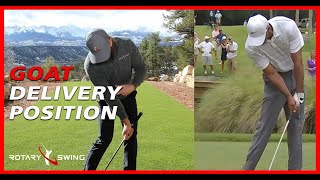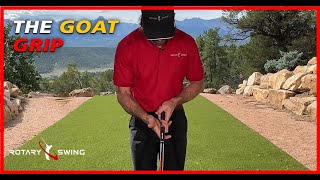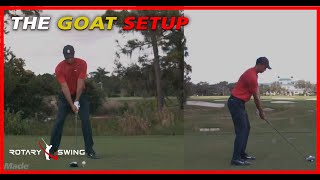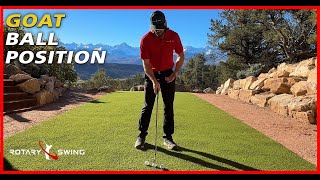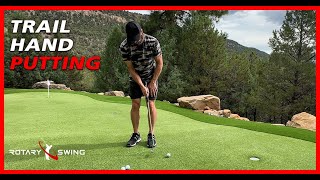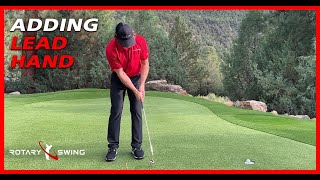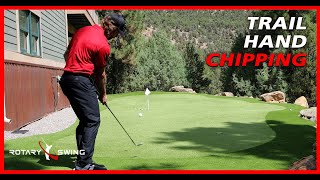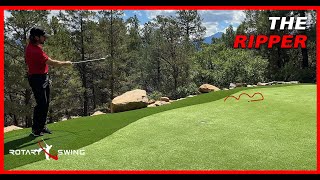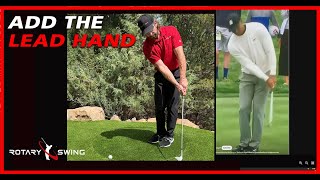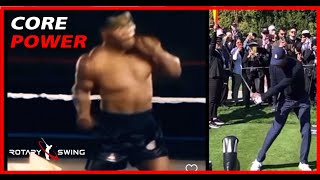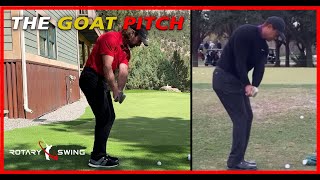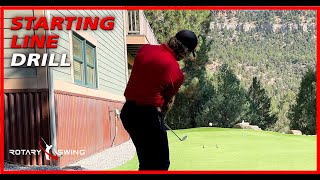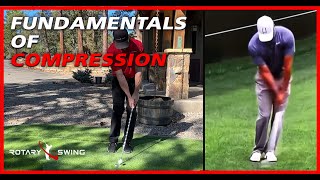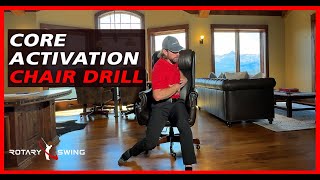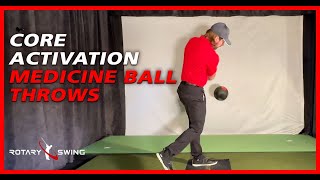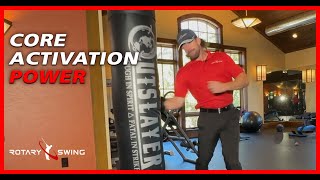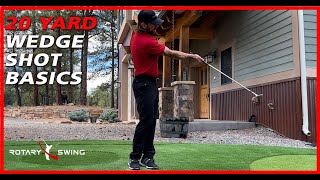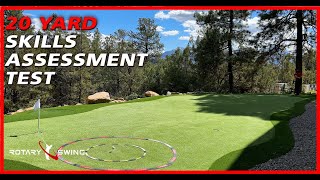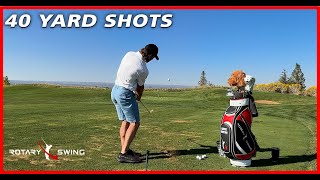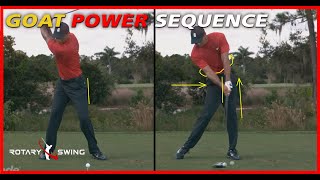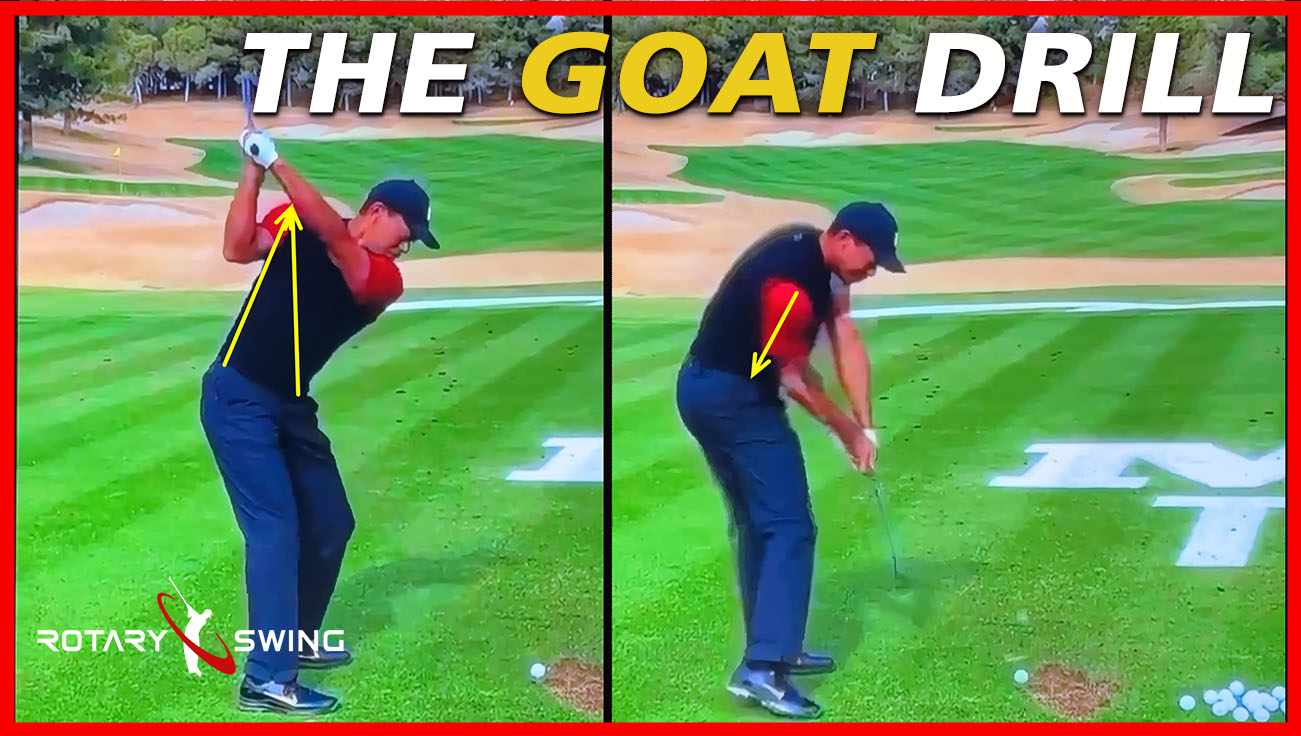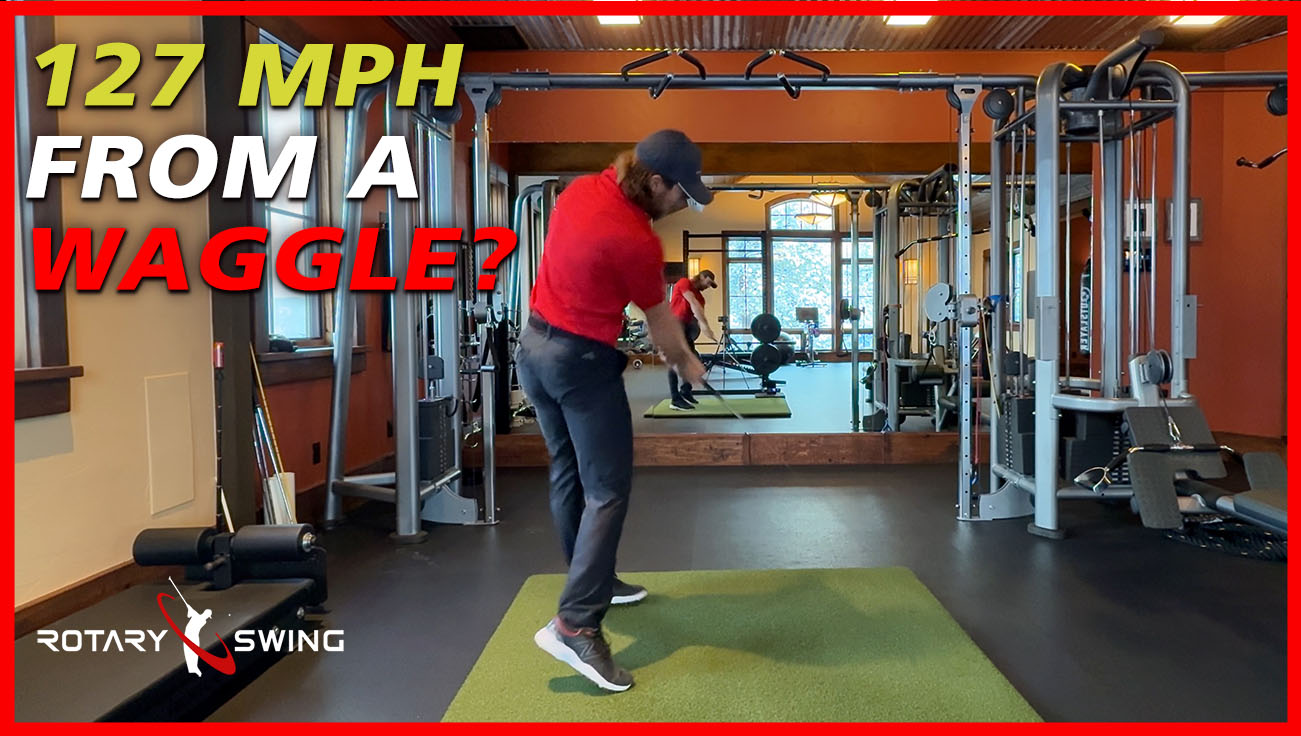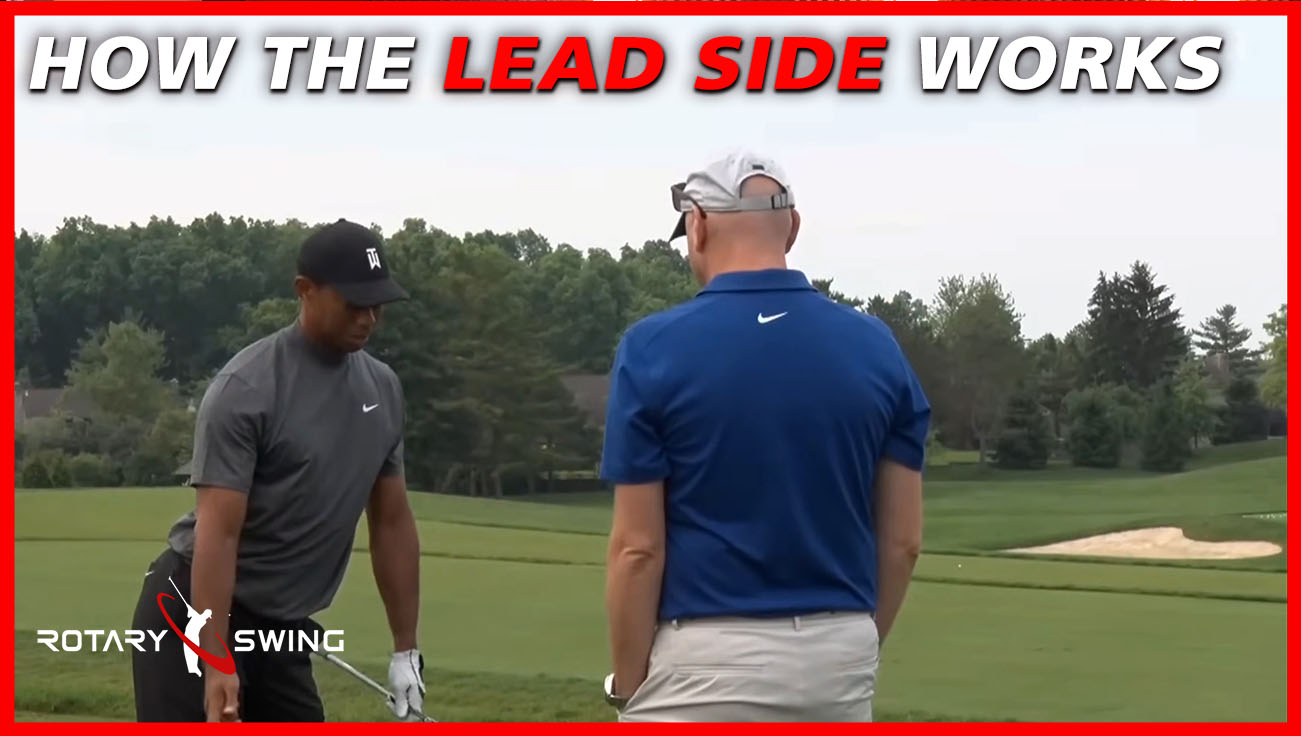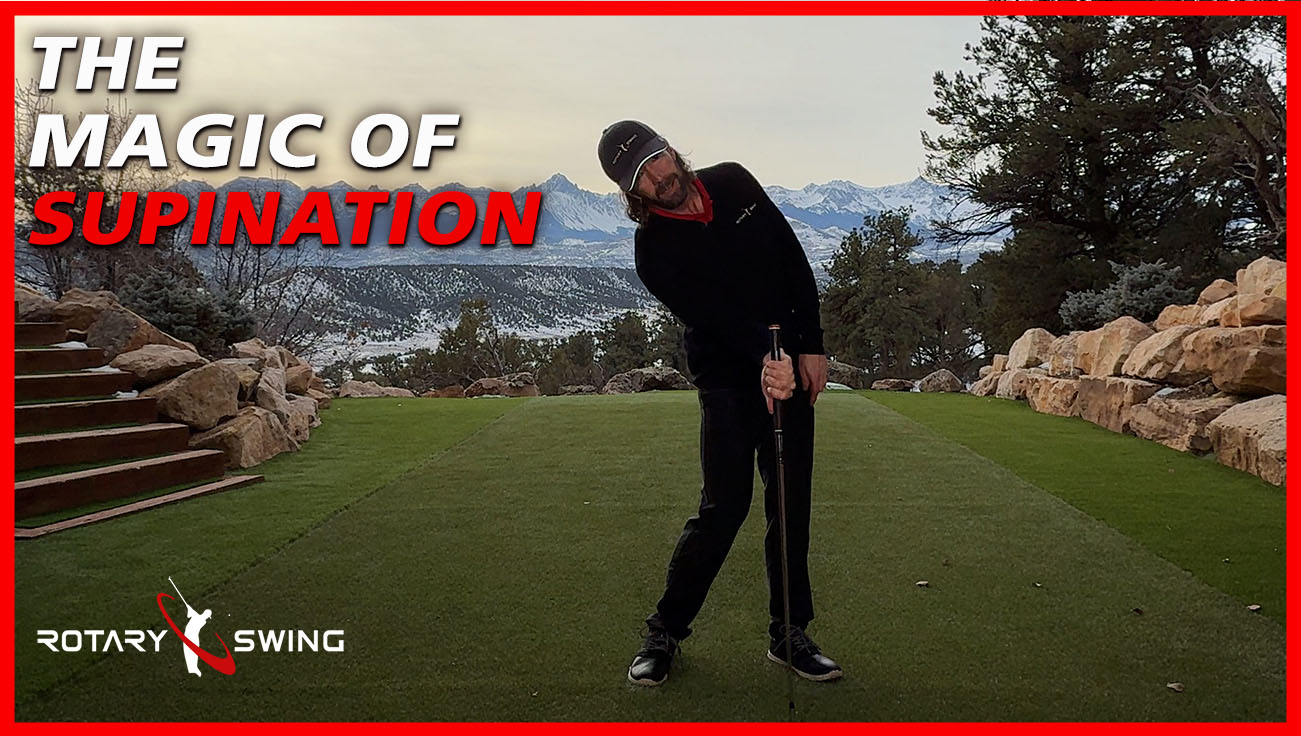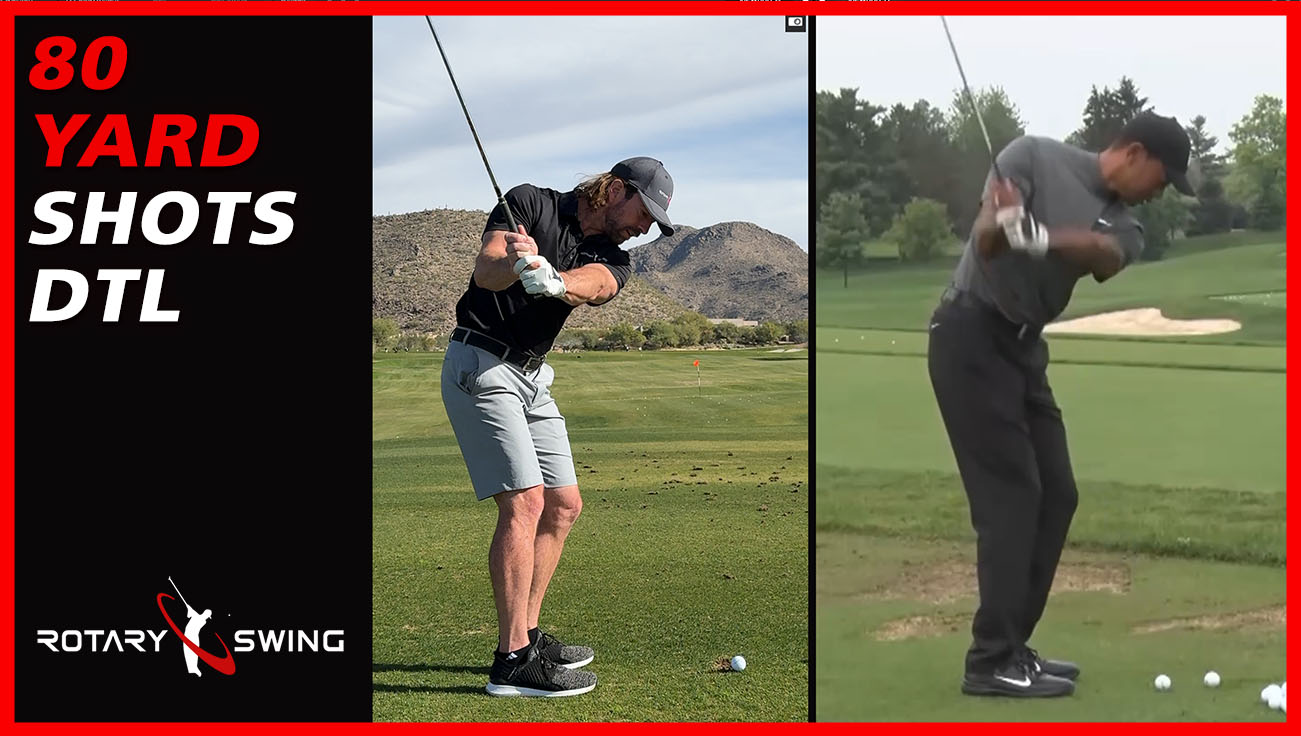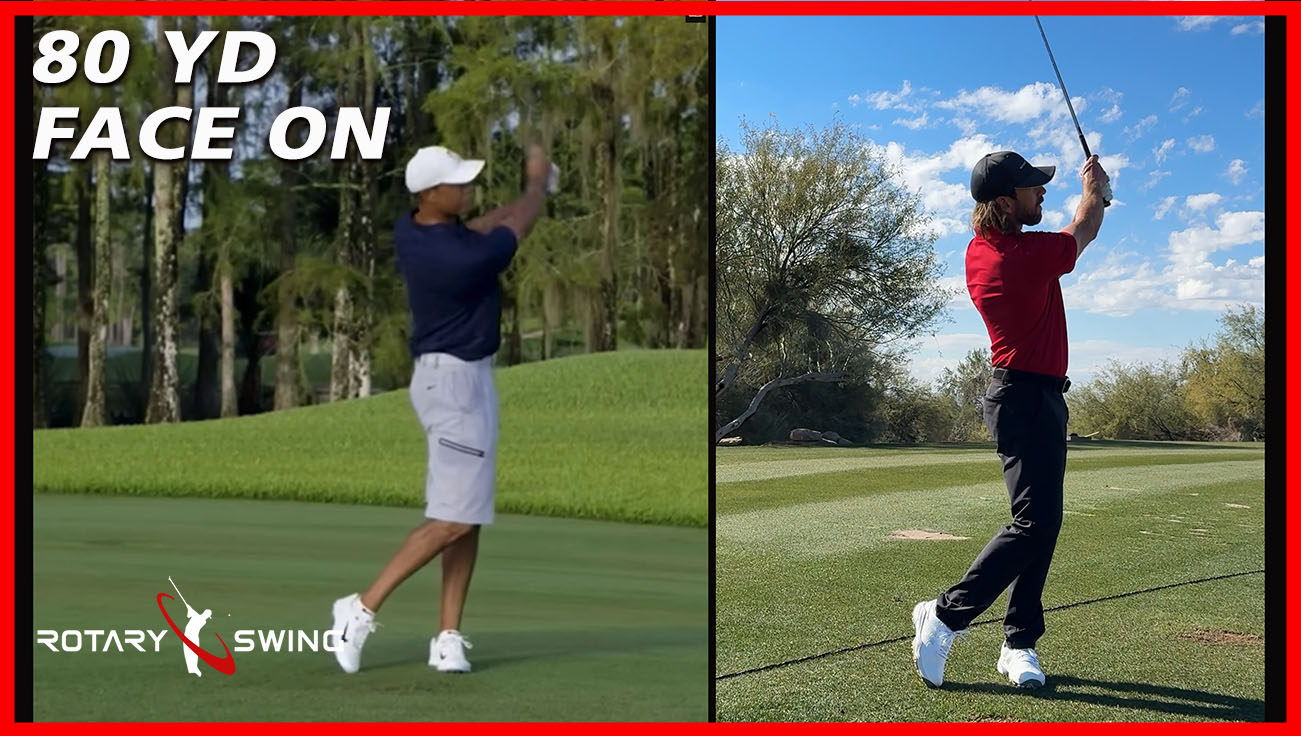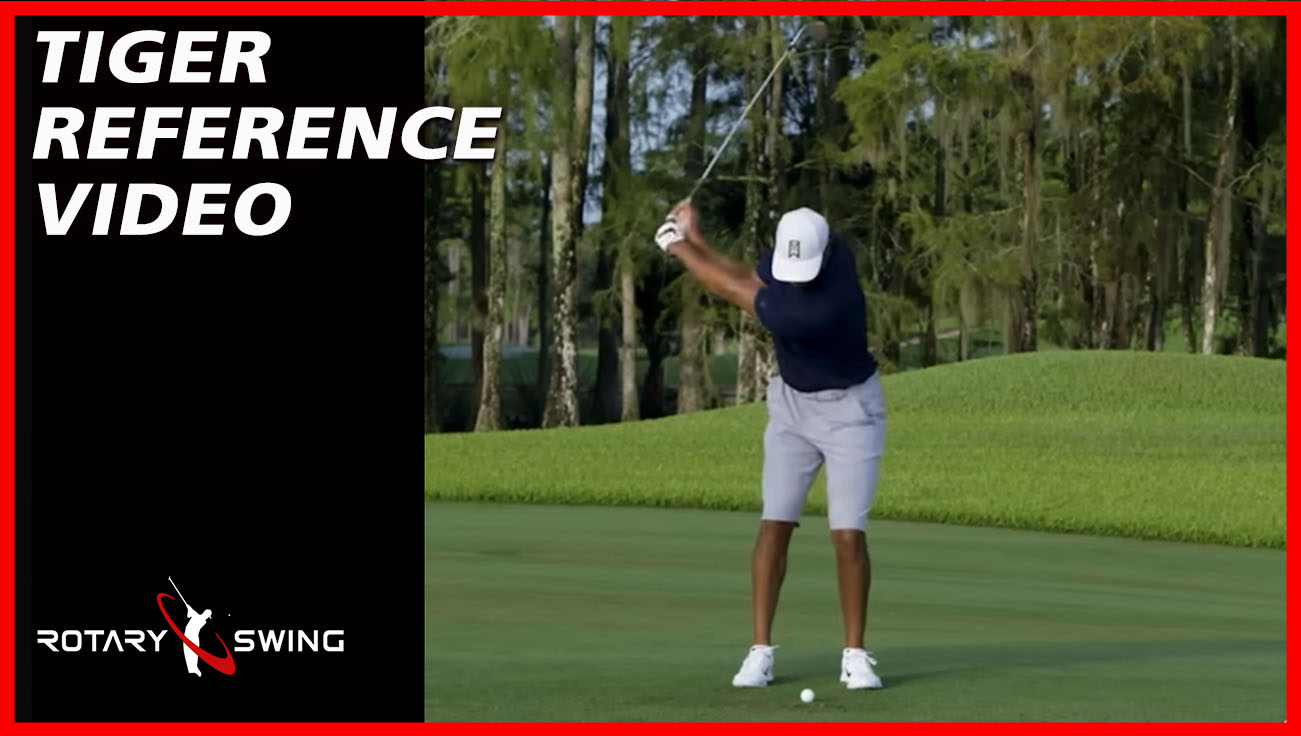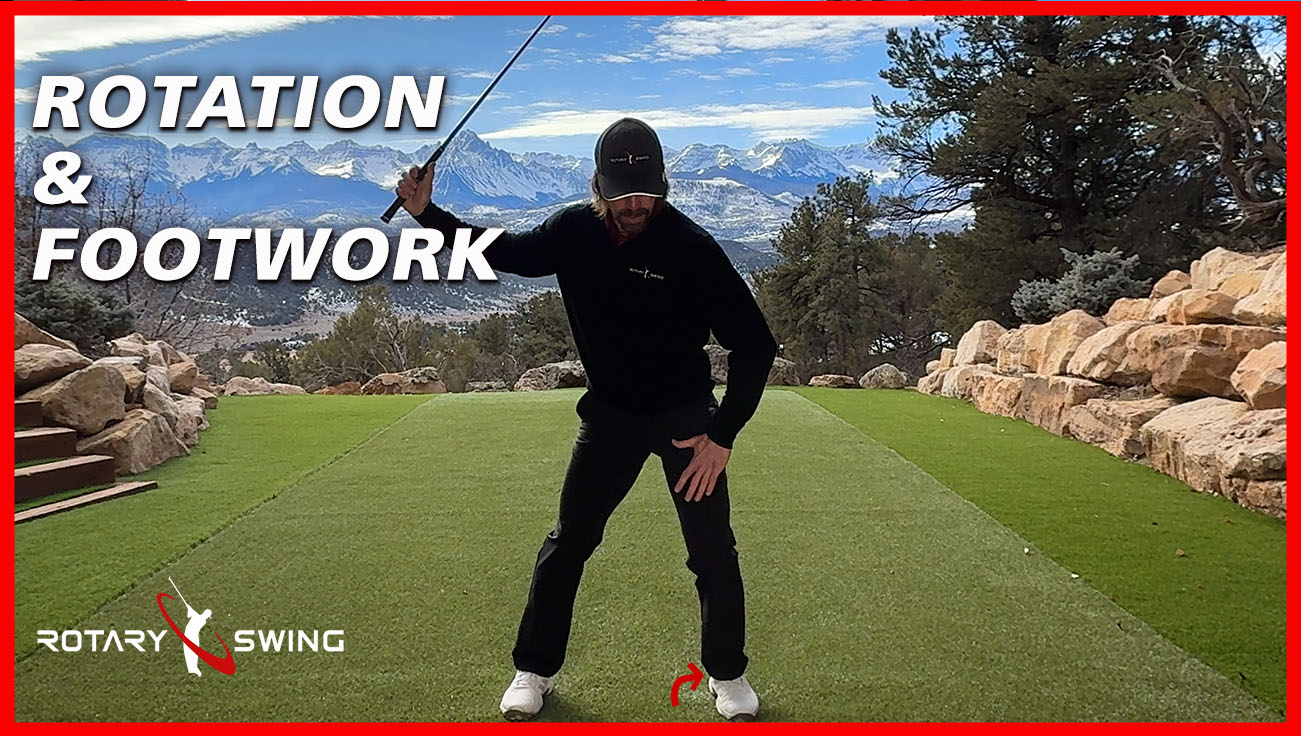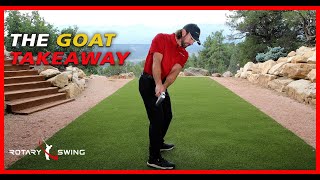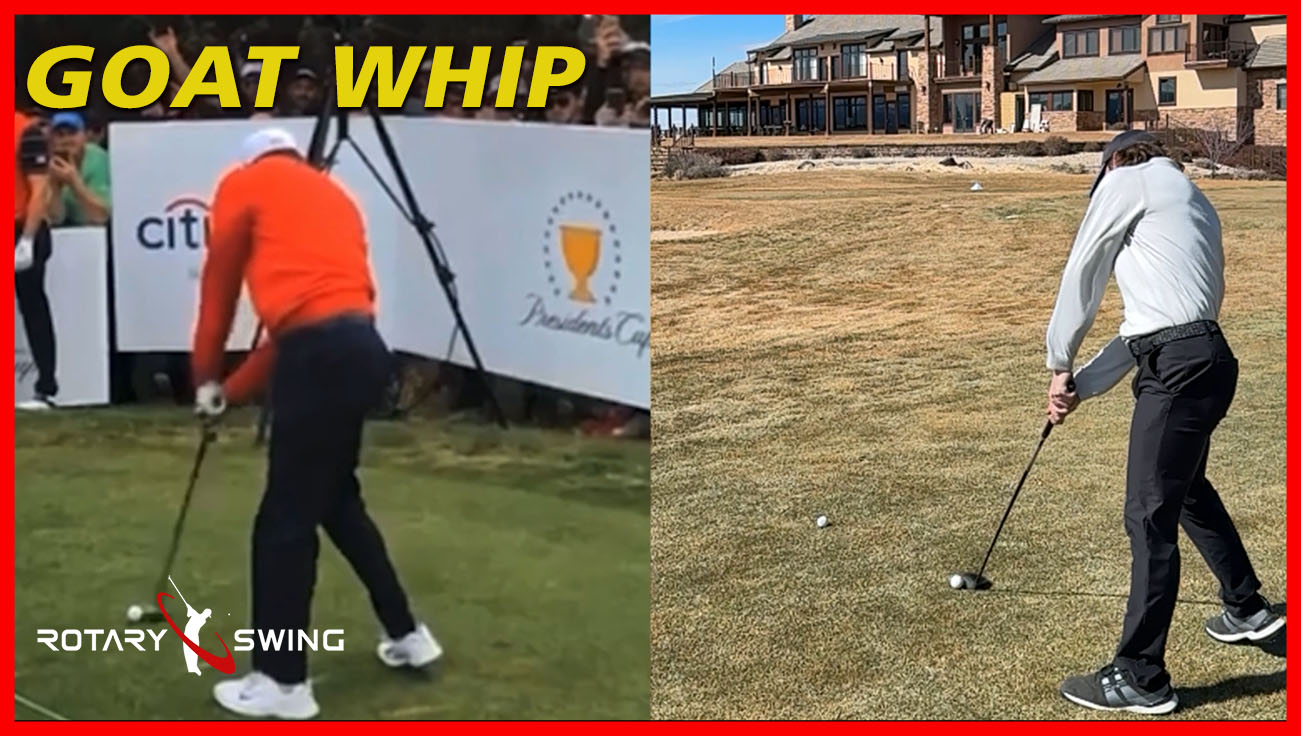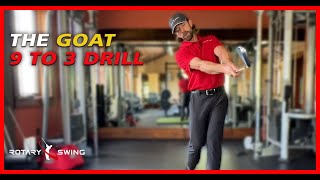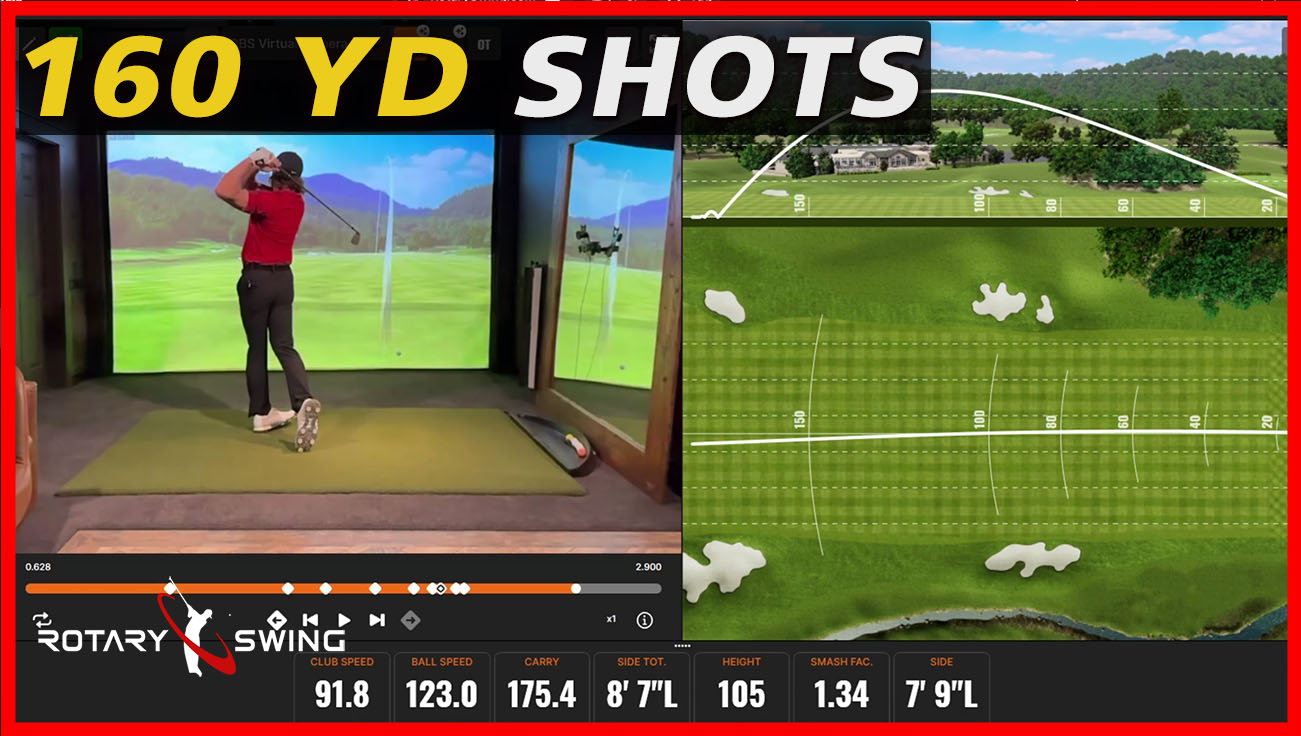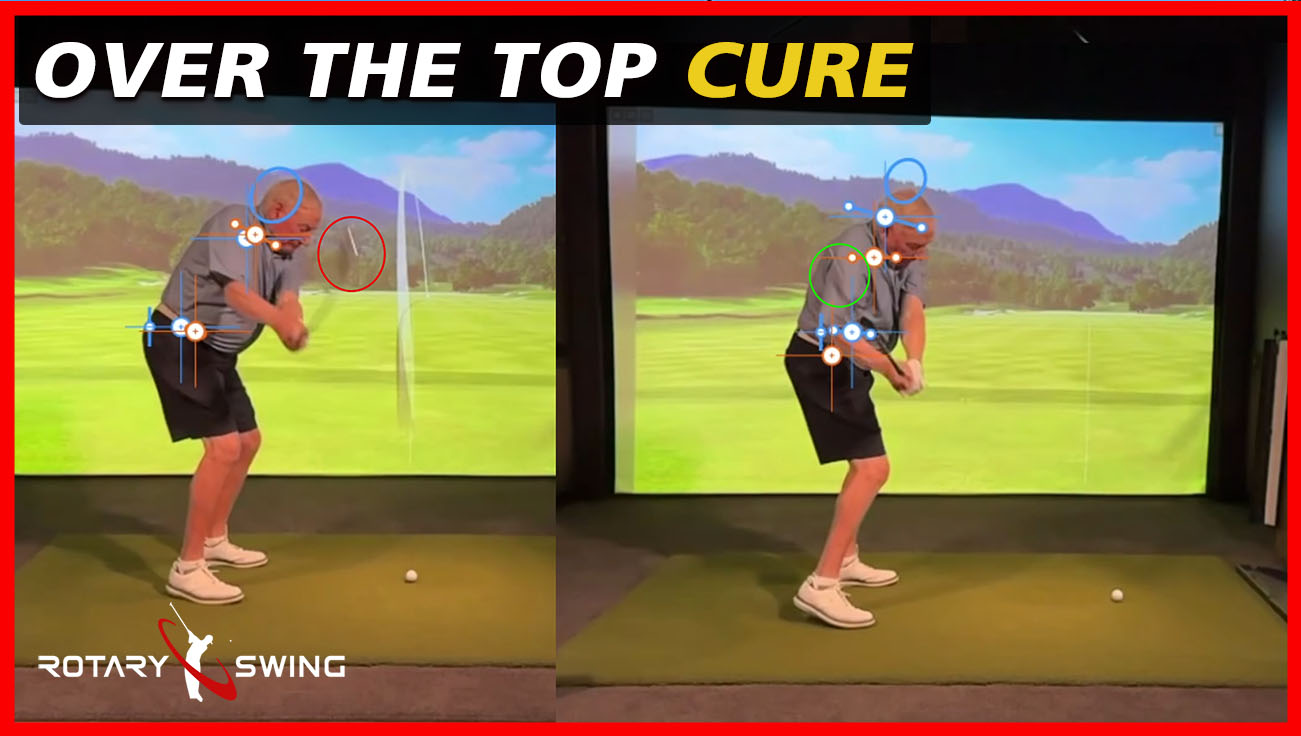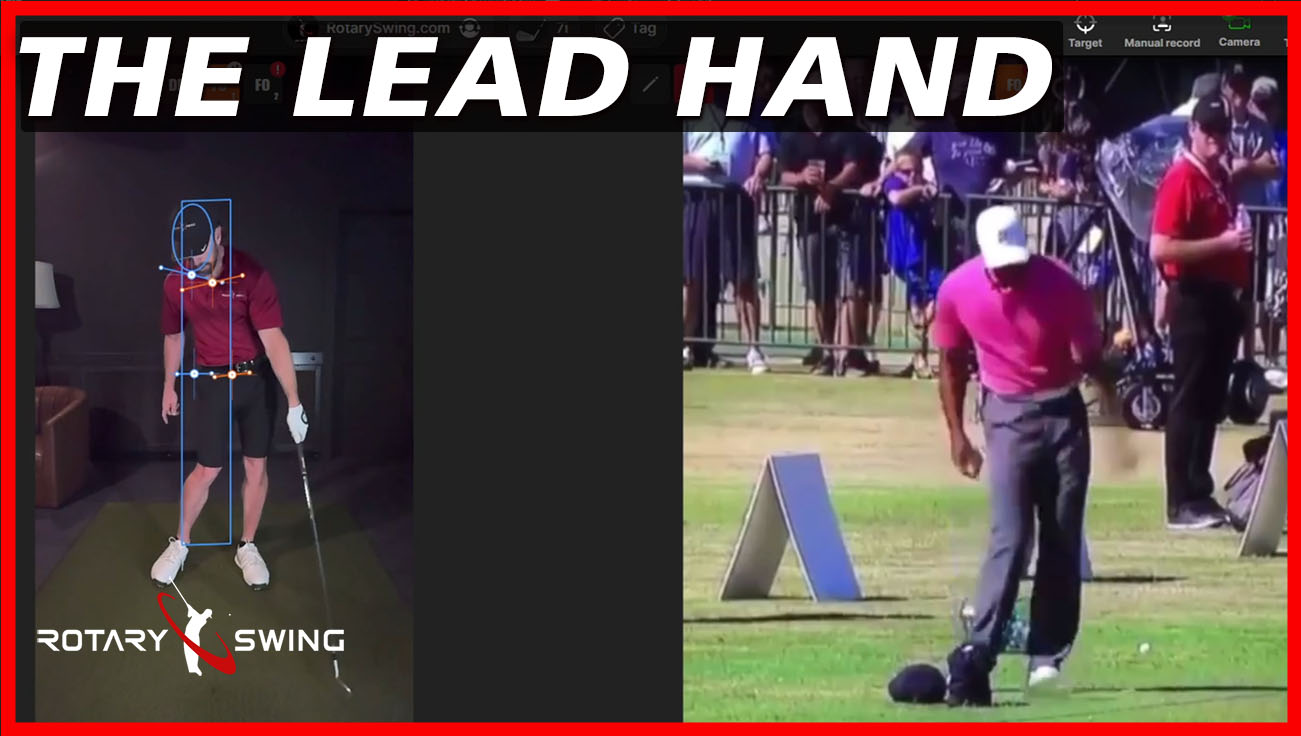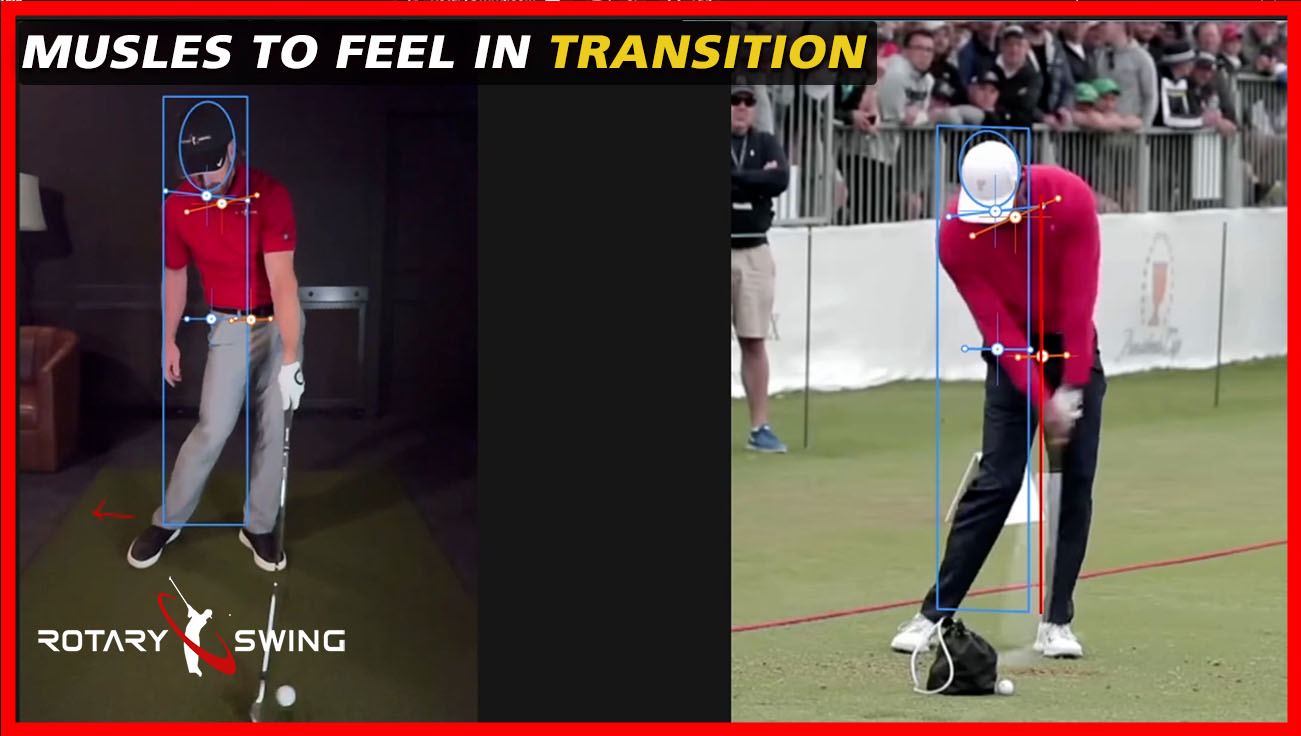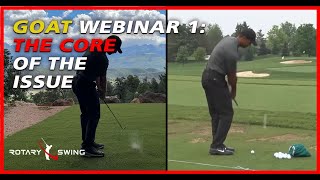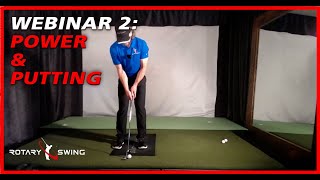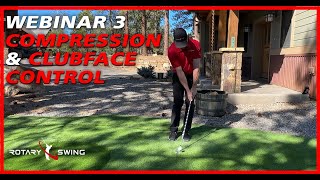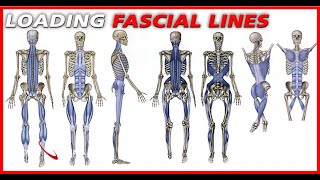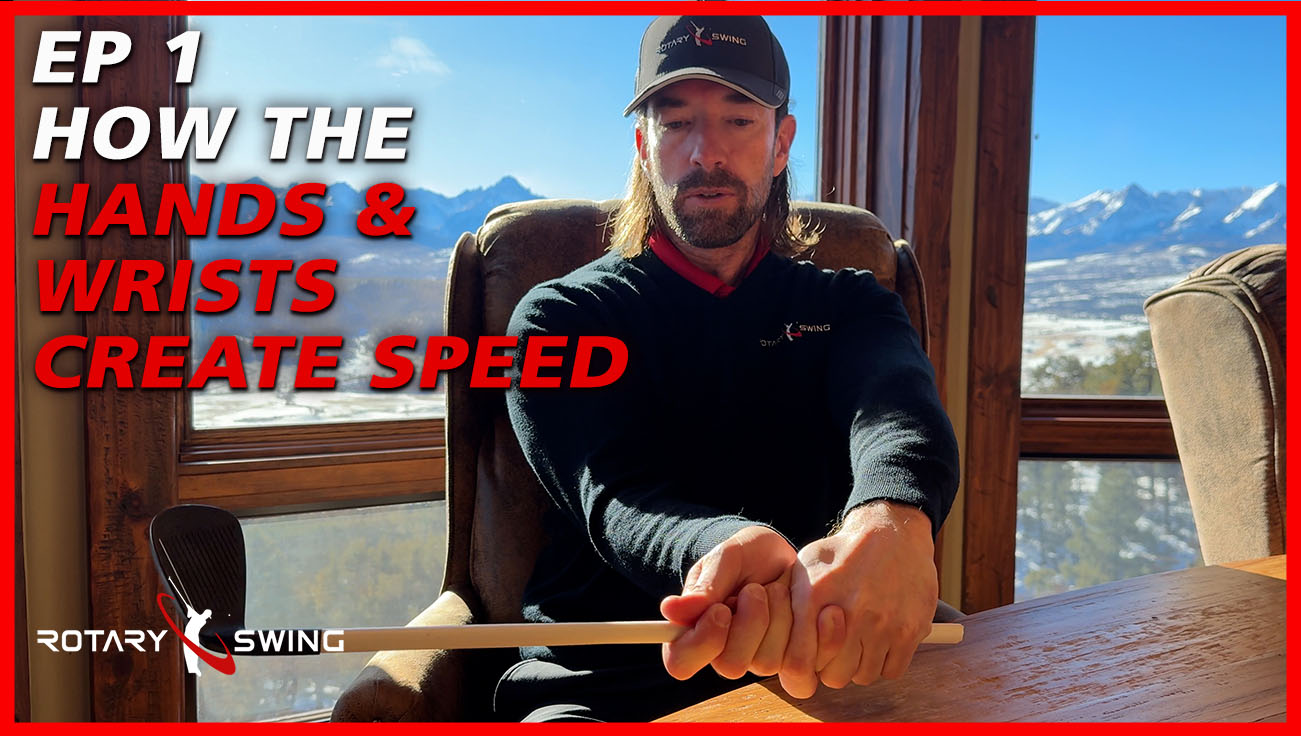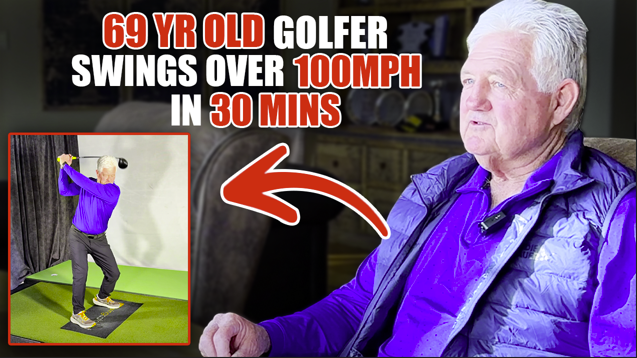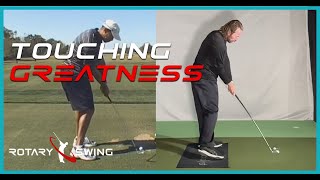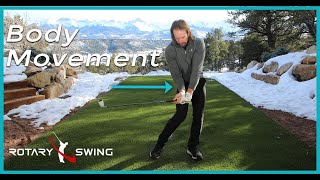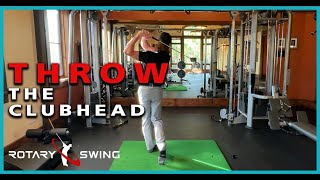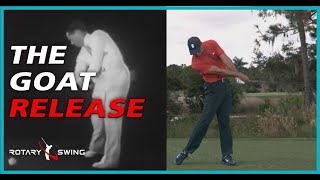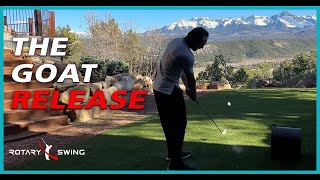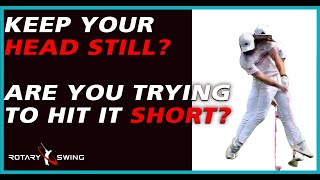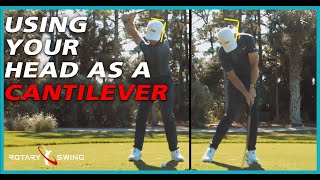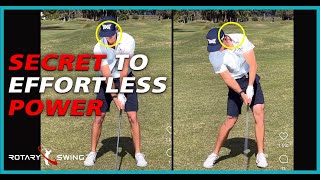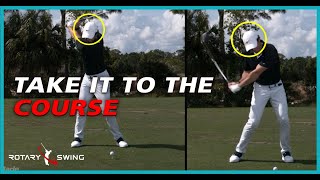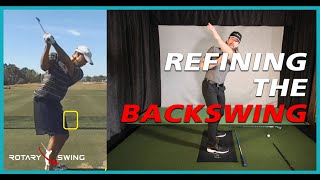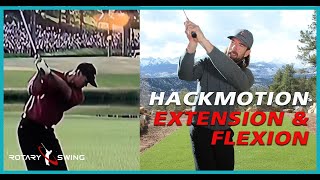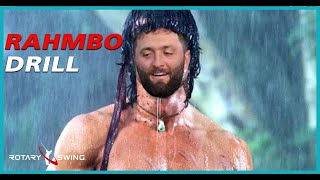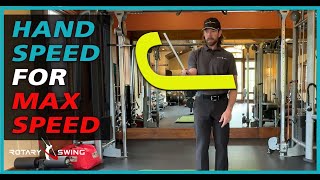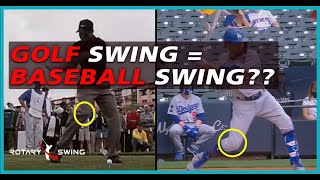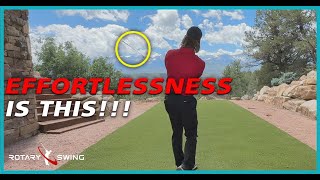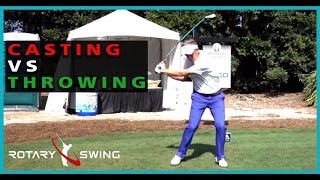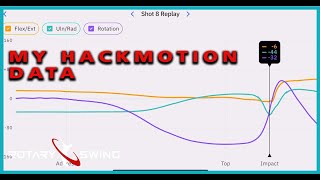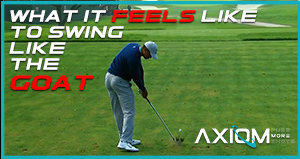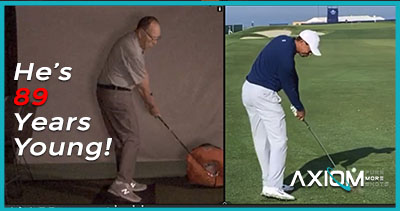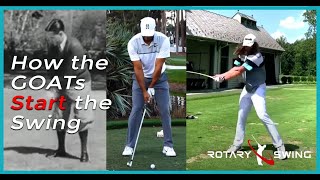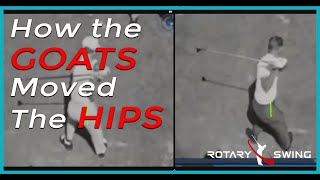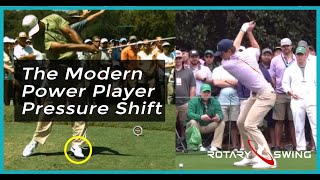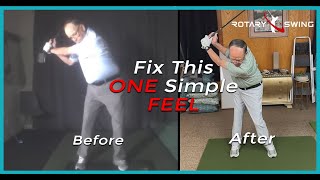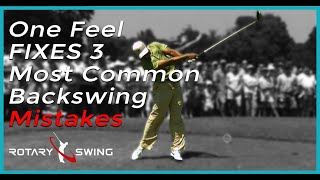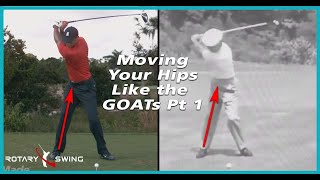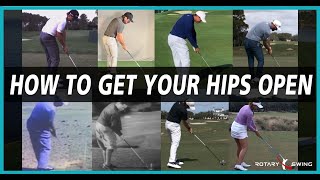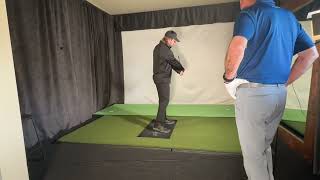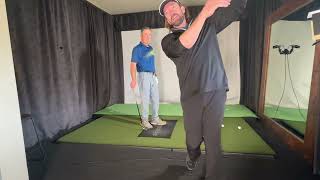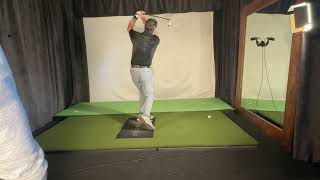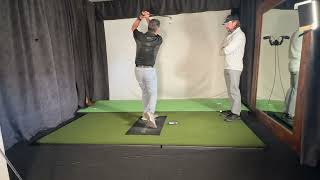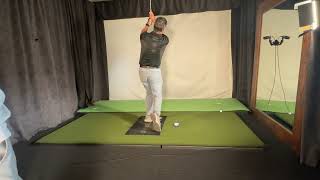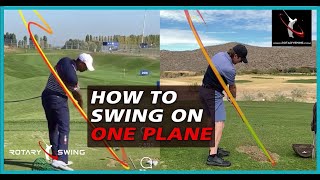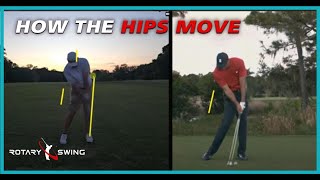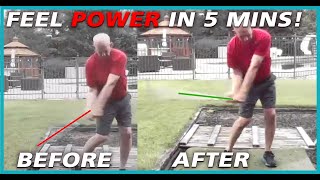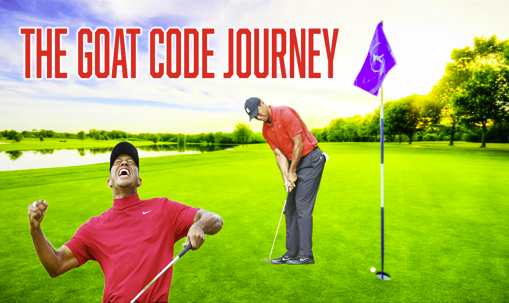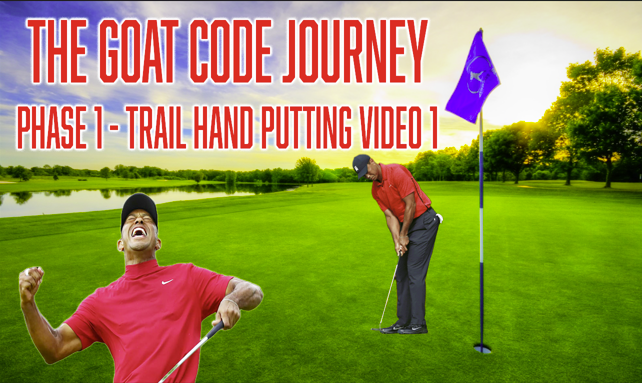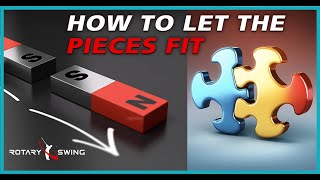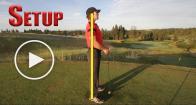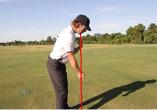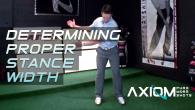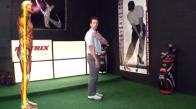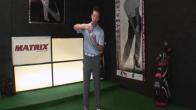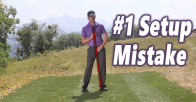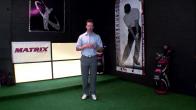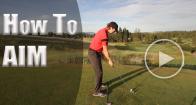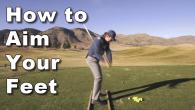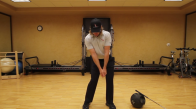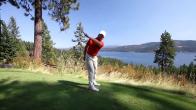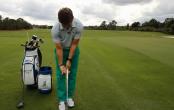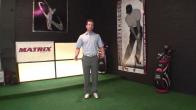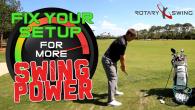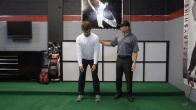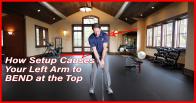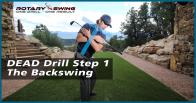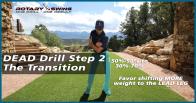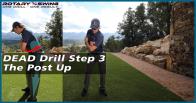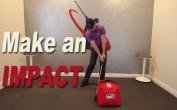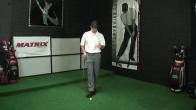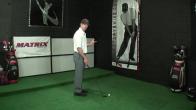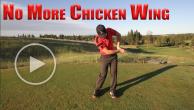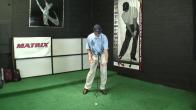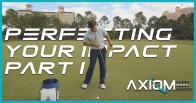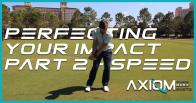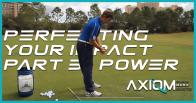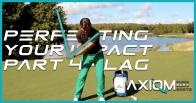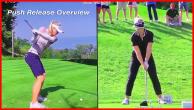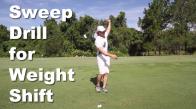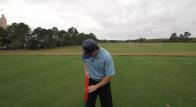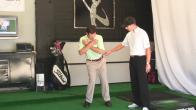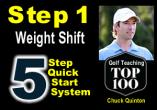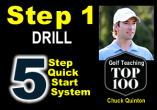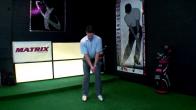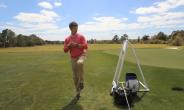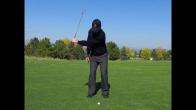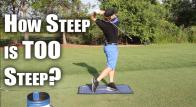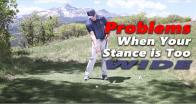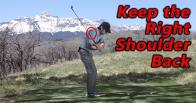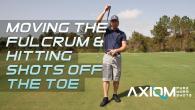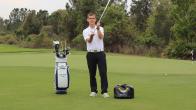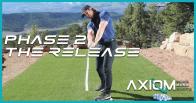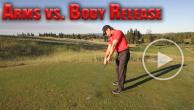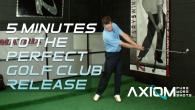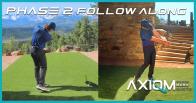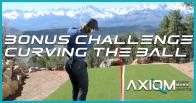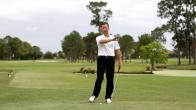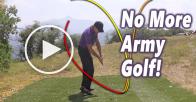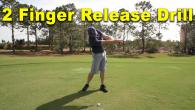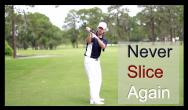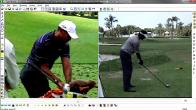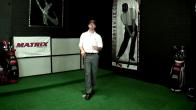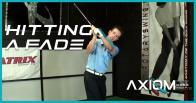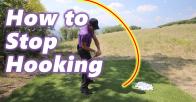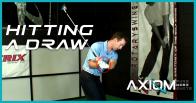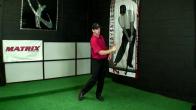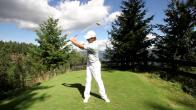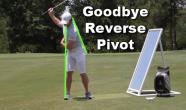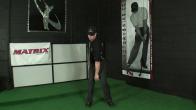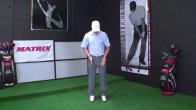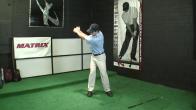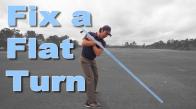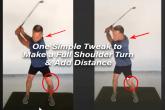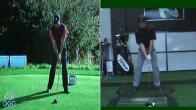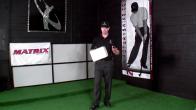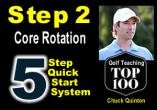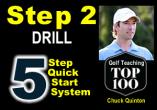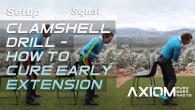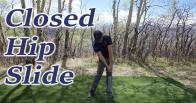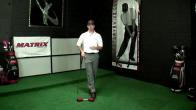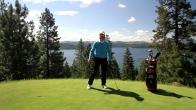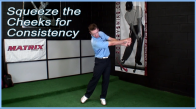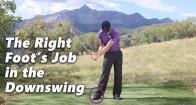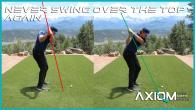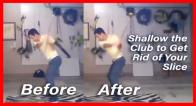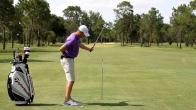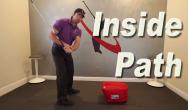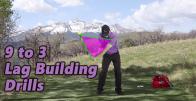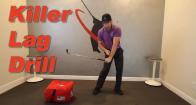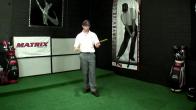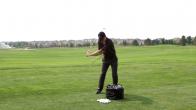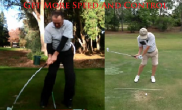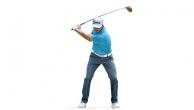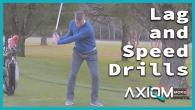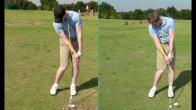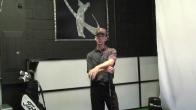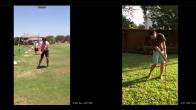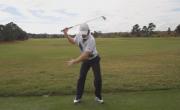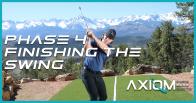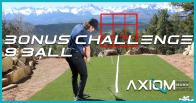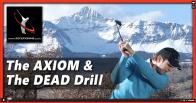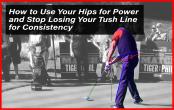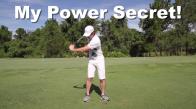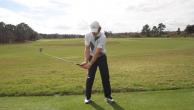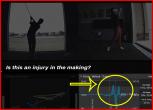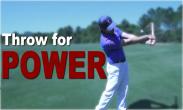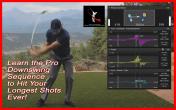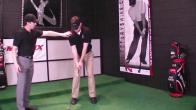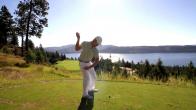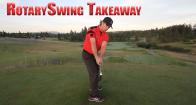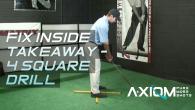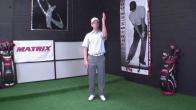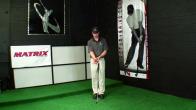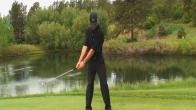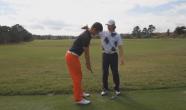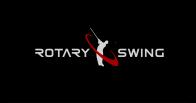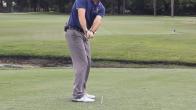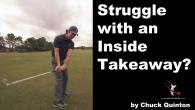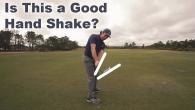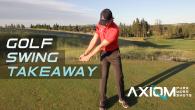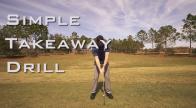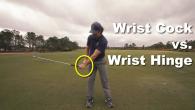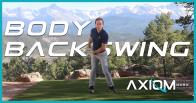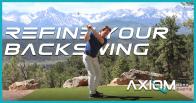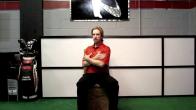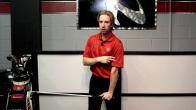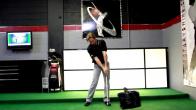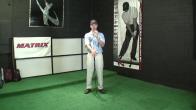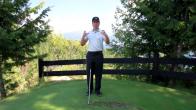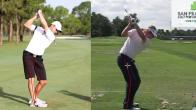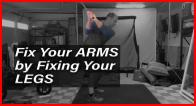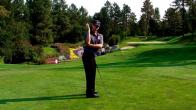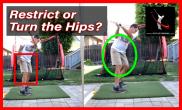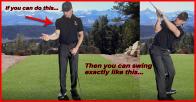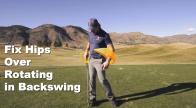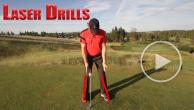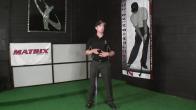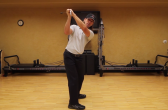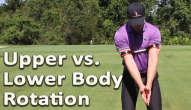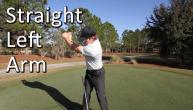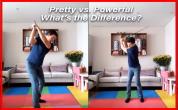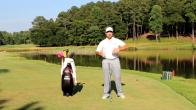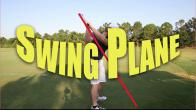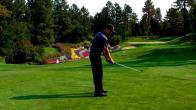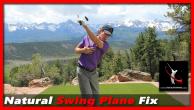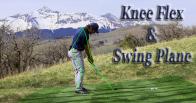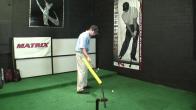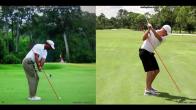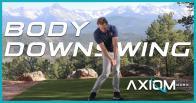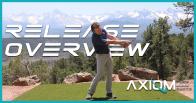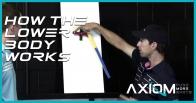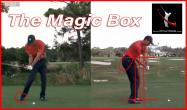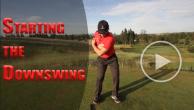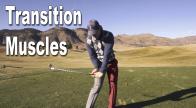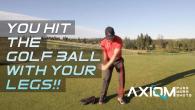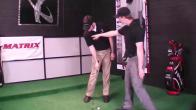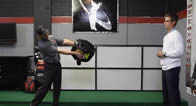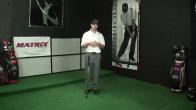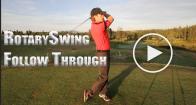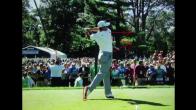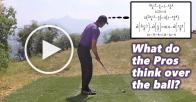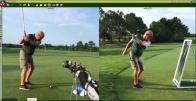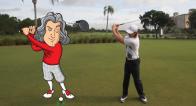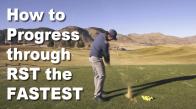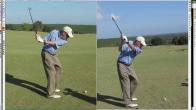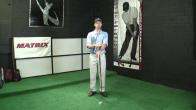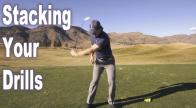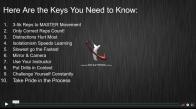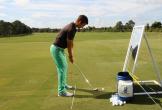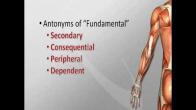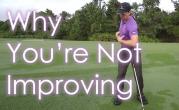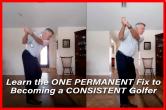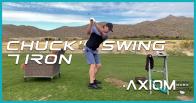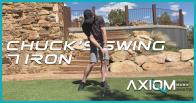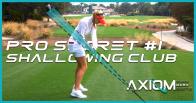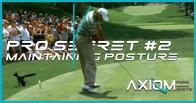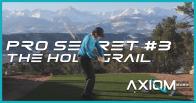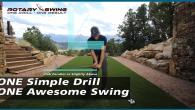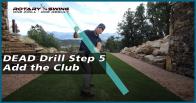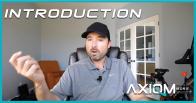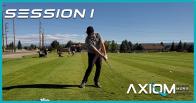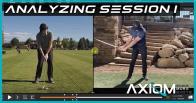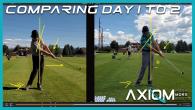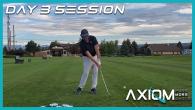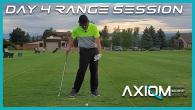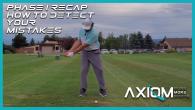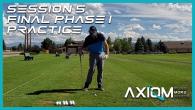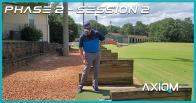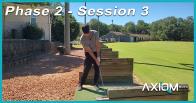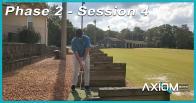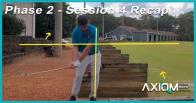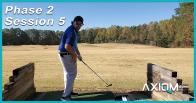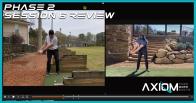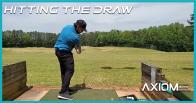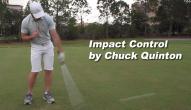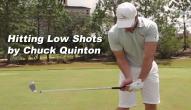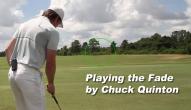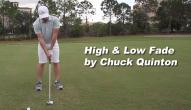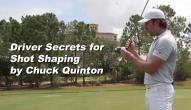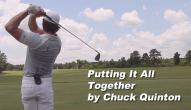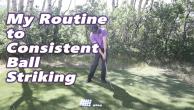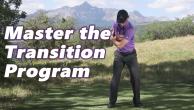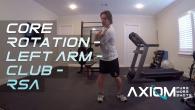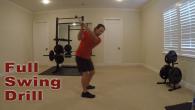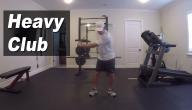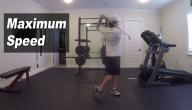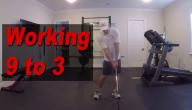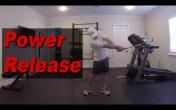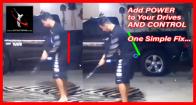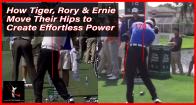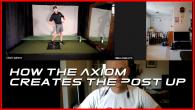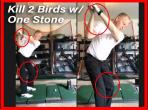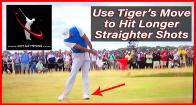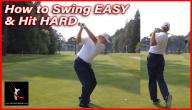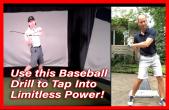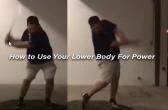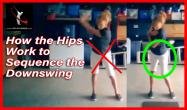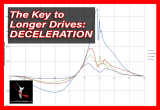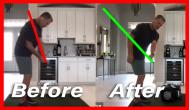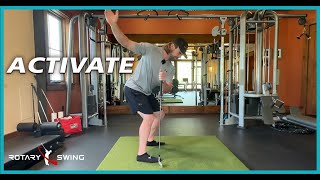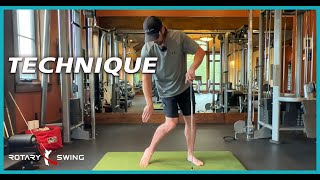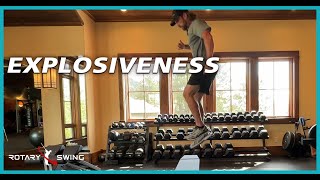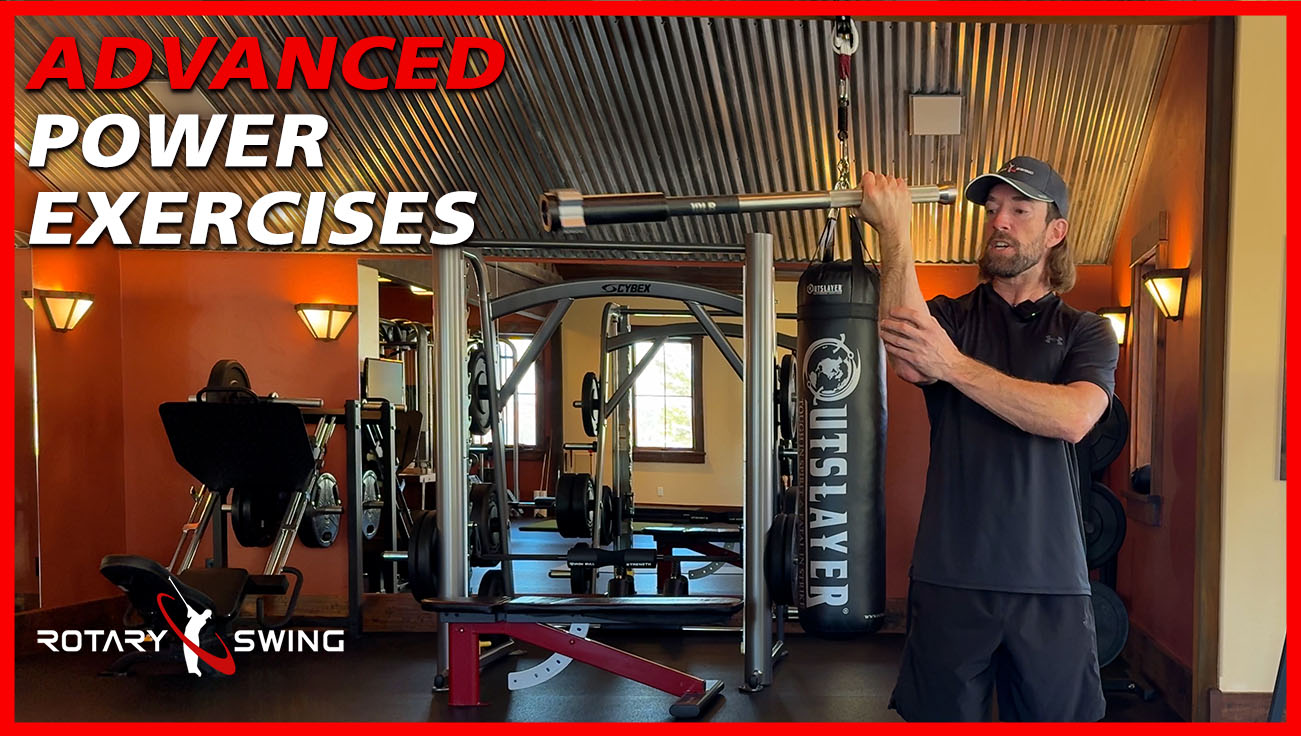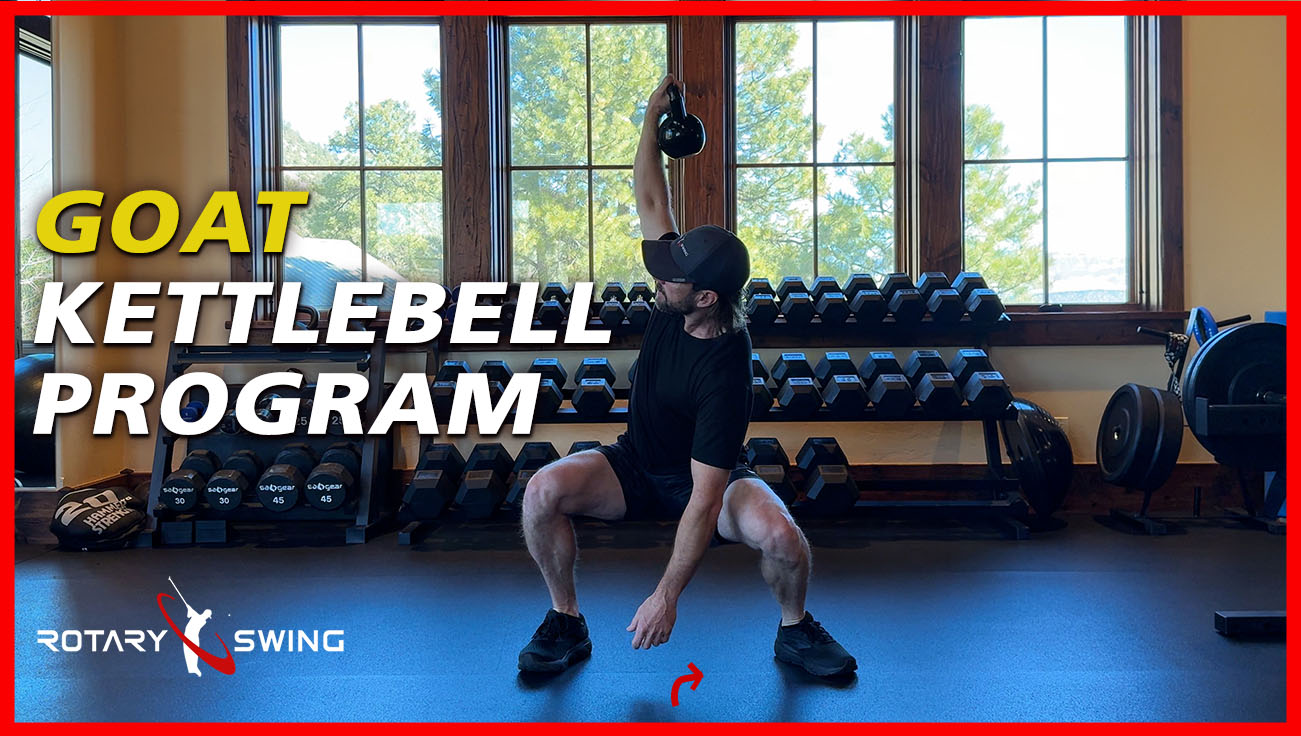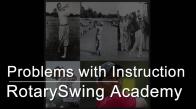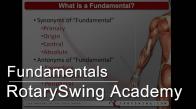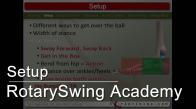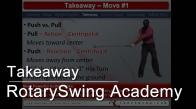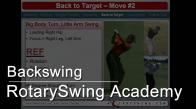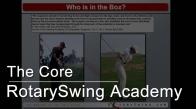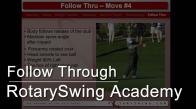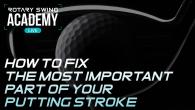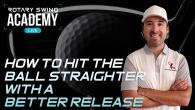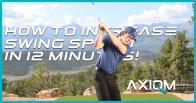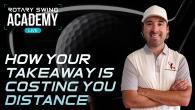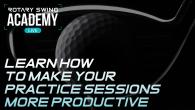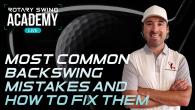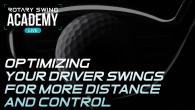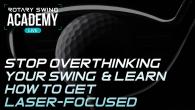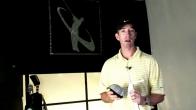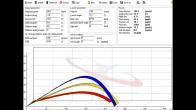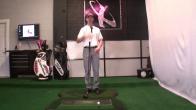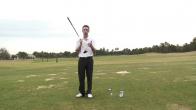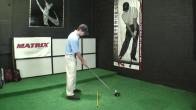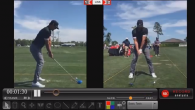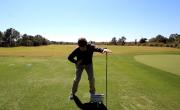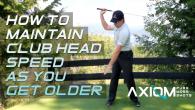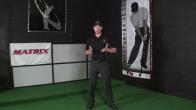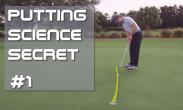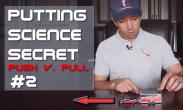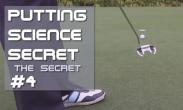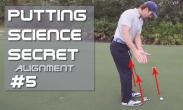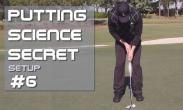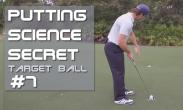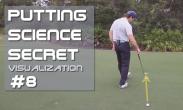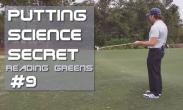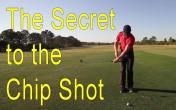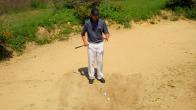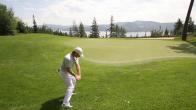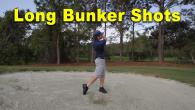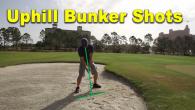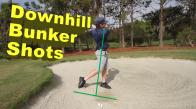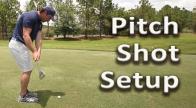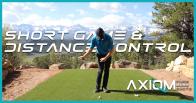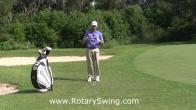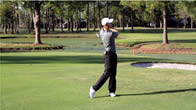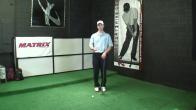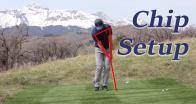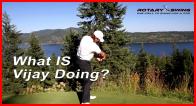C4 Bootcamp 1, Dec 10 2022, Session 4
Session 4 of 4
Okay, hopefully we are live and people can hear me.
If not, please let me know in the chat.
Or, as it says, be the first to say hello, Good morning Joseph Giles, Good morning David, Kevin, Hello from Alabama.
Good morning Craig.
We are live, all right, Troy.
Can everybody hear me?
Can everybody see me?
The most important thing that we need in today's session Good morning, all right, loud and clear, awesome, all right, Hello June.
Michael Roy got a big group today.
Not everybody attends, uh, all the sessions because they're recorded and they just come back for the replays.
We got a large session today.
I sat here, watch the sticker just go through the roof about five minutes ago.
All right.
Raymond, fantastic.
Good morning Kevin.
So how are we doing today?
How are we doing today?
Enjoying our Saturday?
Ready for session four?
As usual, I will be your humble swing guide today for the final day of boot camp.
We're going to discuss a lot of topics today.
I'm going to try to keep it a little bit neater, a little bit tighter in the initial because I'm going to stick around.
And make sure that everybody by the time we leave today's session, knows exactly what to do, exactly where to go.
All questions answered, all t's crossed, all eyes dotted.
I want to make sure that we're all on the same page.
So, as usual, I'm going to groups start to gather in, though, uh, as the group's gathering in happy to answer some questions.
Up until this point.
Uh, see if I can help you out with that and then we'll get started rocking and rolling.
Everybody doing well with the move so far, got it down, ready to master the golf universe?
Should have done some stretching because I gotta make some full swings today.
One of the things, swinging a golf club to me at this point is pretty second nature.
The perfection of it, not so much.
All right.
Anthony's in the group.
Love it.
Hey, Anthony, everything good on your end?
Because for some reason, the chat kind of stopped.
So it gets me a little nervous.
No messages, all right, everything's looking good, perfect.
Anthony is in the house, everyone.
Rotary instructor Anthony in the chat to help out with all your typing and golf needs.
So today what we're going to do is we're going to talk about the finality of the swing, and we're going to also kind of delve into a little bit of dead, a little bit of axiom, and what you kind of need to do, you know, going forward to take advantage of this camp.
And oddly enough, Anthony and I actually had a talk yesterday.
Us, you know, our instructors talk on the side, and it brought up a lot of ideas that I wanted to bring up today.
I didn't think I was going to talk about.
So actually a little bit of a different game plan than I thought I was going to go with.
All right, Howard, good morning from cold New Jersey.
Well, it's not that cold here in Georgia, Howard, but it's been rainy, Georgia.
I think it's rained every day for the last week and a half.
No questions.
No nothing.
Everybody has this down.
I love it.
Makes my job easy.
Means I can just stand up here and do my mirror drills.
See how my takeaway's doing, my top's doing.
I feel like I just pulled a muscle.
All right.
We got something up here.
Phil.
How do you prevent right thumb from pushing down on the shaft?
It loses lag and steepen.
It's typically not the right thumb fill, if it's if you're getting a lot of right thumb push.
I want you to check your grip now.
You're gonna typically have this pinch right here.
And you know, Hogan will talk about, you know, pinching that hand to allow you to push forward, but this push right here.
If you're struggling with that, my two suggestions would be, one, check your right hand grip.
All right?
Because it is in a position to help provide power and stability.
But typically, it's in a plunky position.
But also, the easiest way to start believing that is just to start letting it go.
And you'll start to realize how little you actually need to use it in certain circumstances.
But.
If I could find the ideal method to turn off thumb push on either hand, I'd be retired.
I'd patent it and I'd be retired.
It's just one of those things of being aware of the fact that when you start to come down here and you're focusing on your release, the lead hand is going to be focused on the back three hands.
So you don't need anything from that index finger.
And thumb, and the same thing with the trail, the trail hand pushing through, you're more or less maintaining this hinge, and it's kind of the whole motion of this hand.
It's not just relegated to one position, but I would do some VJ release drills and check your grip.
Do we shift to the lead side before the backswing is finished?
Yes, Stephen, he will start the downswing before the backswing is completed.
Now that's a little bit of an advanced move.
I like it to be, uh, a little bit more fluid in nature.
Like, you know, kind of happen.
As a consequence, you start moving correctly, you start moving a little bit faster, or even like when you're doing step drills.
But as you start to get up here towards the top, you'll kind of see how the tailbone and the hips start to move back.
Just a little bit sooner.
Before you finish the backswing because the legs have a long way to go, all right, and they kind of need a kick start, so to speak, to get back.
And you want to generate good lag and shallow and plain path If you get up here to the top, I had a live lesson this week that struggled with the exact same mission.
If you get up here towards the top, and you got 100% of your weight over here, or you wait until the top position to finish your weight transfer, well, the first move getting back is weight transfer.
Your brain doesn't handle weight transfer, weight transfer very well.
What we'll talk about today?
You want to shift weight early in the swing so that as you're finishing your backs, when you can go ahead and start generating the weight shift.
Coming down.
Dave video breaking up Let me know if we have any other video breaking up issues or it's just Dave with square shoulders and impact head down?
Doesn't the release happen?
Naturally?
Nothing to think or worry about.
Yeah, that's the goal, is that you decelerate, You slam on the brakes so that the club releases independently.
Do we cock the wrist at the top consciously or let the momentum do it?
Well, it depends on if you, I mean, if you underdo the wrist, you're going to have to think about it.
But ideally, the goal is to let the weight of the club gradually sit in your wrist portion.
There's no manual needing setting of the wrist.
Unlike me, which I actually had to train that because I trained myself out of it.
To avoid thumb push, why not overlap baseball grip with thumb wrapped under grip?
You can.
I mean, there are little tips and tricks that you can do that.
Even like, I think it's like the MC44s are even fatter in the right hand grip to alleviate more wrist, trail wrist, arm and hand motion.
But the problem is it's just being aware of it.
Especially like when you start generating lag, it's feeling it more in the wrist.
These positions with your fingers.
kind of like the thumb and all those, they're mainly just there for support.
You have to think about the fact that you're not really trying to use them for anything.
And you're not getting power from your fingers.
How do you feel about Matsuya on a pause so you can only think about weightship at the top?
Well, Phil, if you think about it, or you watch Matsuya, or you put him on a pressure plate, you'll see.
that when he gets up here and he stops, which is a very tough move, which you'll see that when he gets here, that little checkpoint, if you're coming to almost a complete stop, it's going to be easy to kind of get that weight going, so to speak.
The problem arises if you're shifting weight late at the top, and then your first move is you have to shift weight.
He's already done with a lot of stuff.
He's just slowing down.
I wouldn't necessarily teach it, but it works for him.
He's a hell of a part.
All right, I'm going to give one more minute, and then we're going to get going here.
Depending.
Struggling a bit with getting the left hip all the way back, resulting in slight tush line loss.
Well, Gary, you think about this two ways, okay?
If you're struggling with getting the hip back, why are you struggling with getting the hip back?
Is it because you're up here at the top and you're using your upper half so much that your legs quit?
That's more common of what I see.
Everybody thinks they're just this big, massive, you know, hip pusher or hip spinner, which is why they're losing push line.
It's not really always the case.
If you're up here at the top of your back swing and you start to use your shoulders and you start to use your arms really fast.
What happens is you've got a lot of momentum and inertia swinging from the top.
And what your brain does is your brain tells your legs to turn off.
And when your brain tells your legs to turn off, you're never going to hit that tush left position.
You're never going to get that hip open because all your brain is trying to do is literally keep you upright.
That's literally all it's doing.
So when you start to do too much from the top, you can't get your hip back.
Second way.
What I see most is that players, when they start to come down, they stay out here on the balls of their feet.
They start to move too far towards the ball on their right foot too soon, and they never move back towards their heel on their left hip.
If you're moving back towards your left heel, it's going to be really hard to make your left hip go forward and make your left heel go back.
I mean, I'm trying to do it right now.
It's going to be really hard to do that.
So focus on the pressure in that lead foot.
Anybody else before I get started?
Have a little bit of the nectar of the gods over here.
Not that kind of nectar.
It's too early.
Well, actually, it's 10 o'clock.
Technically, I could start with that.
It might make my swing a little too loose.
What percent of weight on the backswing?
I typically try to get players about 75 -80%.
You start getting into kind of like that 90% territory, or even like 100%, 100% definitely.
You start getting like 90 or above.
What I see is that players tend to start getting too much hip rotation.
Their head starts to move too much off the ball.
And when they get over there, They can't recover back to the lead side.
So I typically tell people 75, 80, 80 is a good number, you get 80 on that side.
It's enough to get the load, and it's not too much to not be able to get back to your lead side.
Should my left hip be over my left foot at impact, your left hip socket should be over your knee and ankle So at impact, when you get over here, you finish your weight shift in post, any standard stock shot, not including driver, because that's a specialty shot, setup's a little different, you should be able to draw a straight line from your shoulder socket to your hip joint, to your knee, to your ankle joint.
What you don't want to see is this, nor this.
What Anthony and I typically see on our end, Is that when players are trying to get this weight over here, is that they get this?
They get more of the slide action?
And that's when you start blowing up your left hip, tearing labor rooms, all sorts of problems, all right, I just saw four more people come in.
I'm gonna give it 30 seconds, I don't know, I said a second ago, and give it a little bit less, but give it 30 seconds.
And then We'll talk about the swing.
Well, let's get started.
So welcome to session four, the last session.
As I mentioned earlier, please.
If you have any questions, no matter how silly you think it, well, there are some silly questions, but no matter how silly it is, if there's something that you do not understand, please ask at the end.
My goal, Anthony's goal, Chuck's goal, our whole goal here at RST is that you understand what you're trying to achieve.
If you have the knowledge of what you need to do, it's not that I want you to be your own doctor, but I kind of want you to be your own swing doctor.
You can diagnose these things on the fly.
You can fix them on the fly.
You can get done with your rounds.
Say you're playing in a tournament.
You had kind of a little bit of a rough day, but you got the second day to go, and you're diagnosed and like, oh, okay, well, I was spraying everything to the right today.
What are my typical causes of that?
I filmed my swing.
I've done my C4 drills.
Oh, you know what?
I was probably just getting a little bit active with the chest today, which was delaying the face and causing it to stay open.
So I'm going to go to the range after my round.
Now I'm going to work on really quieting this chest so that I can start to get that club to release and get it to square up.
I want you to be able to do that.
I want you to have that knowledge that you're not wasting any time.
You can fix it now.
There's no reason.
I mean, I know I've been in the business since I could walk.
Actually, since before I could walk.
But do you have all the information that I have?
There's no reason that with the information that we're doing in this boot camp and with the information on the website that you should ever be stuck.
If you are stuck, that's why we're here.
Okay?
But I want you to walk away from this camp not questioning.
What do I do now?
or I'm hitting this kind of shot and I just can't stop it, I want you to have a roadmap forward, okay?
So session four is all about just kind of explaining all the bells and whistles.
To this point, I mean, you should be able to do impact at this point.
If you can't, stay with it.
But to this point, we've worked on impact.
We've worked on nine to three impact and release, and we've worked on getting the swing three-quarters of the way done, the arm parallel to the ground, and adding a little bit of speed to it.
The only thing that happens now is literally you finish your rotation and you do every single thing that you've done up until this point.
That's literally all that you do.
And what you'll come to find out, and what I've found out, is that most players in that phase three territory That ends up kind of being their stock swing.
They're just kind of gamer swing.
That kind of balance, three-quarter feel, using the legs, that's typically around 75%, 80% of what they are normally doing, yardage-wise.
And they're like, you know what?
This is a very controlled shot.
I can do it on command.
It's very easy to release because I'm not over-swinging.
I'm not doing anything silly.
It's kind of like what people kind of play with on a day-in-day-out basis.
But as I know, you're going to want to start to make full swings.
You want to hit it a little bit further.
You know, you want to start bottoming things, or you want to really kind of maximize the potential, you know, of a 7-iron on par 3.
So what do we need to make sure of when we're kind of graduating to a full swing?
Will all the check markers stay the same, which is the good one?
What I want to do is I want to go through a couple of the pitfalls that I see.
That when people start going to full swing, that they forget about in their movements.
So the first thing is, when we start going from phase three to phase four and we start making full swings, our goal is to get up here 75-80% of the weight in the trail line.
We want a full shoulder turn, at least 90 degrees.
The hips, depending on your mobility, 45 degrees.
For some players, you may need 55 degrees to get a 90-degree shoulder turn.
That's okay as long as you maintain some deflection and you have the weight over here.
But our goal is when we get up here, we want a full shoulder rotation, 90 degrees with the shoulders, 45 with the hips.
We want to have some width.
We want to maintain 90 degrees or less.
with this trail arm.
And we want to make sure that the head doesn't move too much off the golf ball.
As you'll know, when we started working on this throw the ball drawer, we were pretty darn close to making a full swing from there.
So all I'm doing from here, as I get lead arm parallel to the ground, is I'm finishing that last little bit of flexion and finishing that last little bit of wrist set at the top.
Tiny bit more rotation, tiny bit more flexion, tiny bit more wrist set.
And a lot of that's going to already be generated by the weight of the club and the momentum of you already moving up to that position.
When we look at it from a down-the-line perspective, and we go from this lead arm parallel position, all we're doing is just finishing with a little rotation, and that's it.
We don't need much more than that.
Okay, our elevation point's going to be right here around the base of our pectorals.
You're going to see I still have flexion in my knee.
I have my shoulder playing right here, and my arms and hands are roughly over my ankle joint, okay?
That's the kind of position that we need to work towards.
Now, with the backswing, I'm going to talk about just the few most, or the few, common faults that kind of wreck it, okay?
When players are focusing on the 9 to 3, everything kind of stays in balance.
When players are working on the lead arm parallel, things stay in balance.
But when they start trying to make a full swing, they feel like they have to become a complete new golfer.
And so they start adding in all these variables that they don't need.
So I'm going to kind of work this from the ground up.
You have your pamphlets that talk to you about the checkpoints with the takeaway.
They talk to you about your checkpoints with the top.
They talk to you about the checkpoints with the transition, impact, and release.
I kind of want to go through my daily visuals when I'm sitting there doing swing reviews.
The first thing is, and the first thing that I see that wrecks people from finishing off C4 is the folding of the trail arm, okay?
That is the number one thing that I see, is that when players start to go and make full swings, everything kind of picks up the pace, and instead of rotating, They start taking their trail arm and sawing wood, right?
they take this trail arm, and they start adding all this flexion and sawing wood.
And this does a few different things.
The first thing is when this trail arm starts to fold.
You're going to see that this club starts to get inside too early, and when this club gets inside too early.
You're going to start to work across the chest and deep, you're going to start to eat up with, because your trail arm is folding.
Especially When you get more than that 90-degree position, you're eating up your width, and you're starting to flatten out the plane and get too much depth, and you can't recover from the downs.
So as you start to make fuller swings and you start to refine your move, the first thing I want you to check is that this trail arm stays straight and take away.
It is an absolute must that this trail arm doesn't fold, or it's going to mess everything up.
Now, yes, you can look at my swing during my C4 sessions, and you can look at Chuck's swing, you can look at a lot of people's swing, and you might see just a slight bit of softness right here, but we're not like this.
You don't start the swing by starting the lawnmower, okay?
When you start to fold this trail arm, not only does the plane and everything break down, you stop rotating, and you start losing one of the.
Biggest principles of rotary swing is that you swing with your body, is that you move your body to move your arms and hands.
And club.
Okay, so the first step is you have to maintain this trail arm staying straight, you can't add flexion.
That's the only way to keep this club out in front of us.
And it's the only way to ensure that you rotate.
It's the only way to make sure that you can see this logo on your chest.
You're not going to rotate If there's trail arms going this way, we've got to start to get that muscle fiber early.
I'm going to give you one of my girls on the side, which is super duper simple to do all this.
So the first thing with the takeaway, check your trail arm, okay?
Inside depth is a depth move, and that's probably the number one thing that I see.
Now, as players that maybe nail this position, where they keep their trail arms straight, and they work to here, we're.
In a proper takeaway, you're looking for your weight transfer, you're looking for your width, your 45 degrees of your shoulders, kind of minimal width of hips, straight arms, club, toe up, or maybe even slightly toe down, depending on the strength of your grip.
What you don't want is this, and the biggest pet peeve is this one, because if the face overly rotates this way, rotation inherently shallows up planed path.
Most, I'd say 99.
9% golfers I see do this, do this on the downswing.
So we have to maintain that position, but what I see that players do after this takeaway position is that they get to here, and they get so focused at arm, hand, and club position that they forget to continue rotating.
You must continue rotating from the takeaway to the top.
You're only 45 degrees done with your rotation at that point.
You've got another 45 degrees to go.
Now, if you have body limitations, if you have certain ailments, yes, we can work around that.
We can kind of nip and tuck where we need to to kind of get a little bit more reserved for power delivery later.
But from this position, we've got another 45 degrees to go to make a complete backswing.
And you can't do that if all you're thinking about is your arms.
I see players all the time get to here, and then they just pick their arms up.
Now you can see from the face-on version, I get to here, I'm loaded, I've got good rotation, now I just pick my arms up.
What do you think is going to happen now once you do that?
You're not going to go back and re-engage the throw-the-ball drill.
You're not going to go back and start using your legs.
As soon as you start taking over with the momentum of the arms, and the arms start working on their own, and they start working independently of your rotation, you're off to the races with having arms-dominated swing.
So as you work from this takeaway position, you continue to take this trail shoulder behind you as the arms finish their elevation, have a little bit of flexion and a little bit of wrist sit.
And your goal, as you do this, you continue to rotate, arms up here, And when you get into this position, okay, your goal is to have your hands roughly over your ankle joint, elbow down.
Now some players lack, as we talked about in one session, a little bit of external rotational mobility.
Okay, and all that is is your trail are being able to go this way now.
Before I had my shoulder surgery, I almost could get that thing, bending almost down the ground without moving.
Some players only have this, they can't make this external rotational movement.
It's a genetic thing.
It doesn't mean there's anything wrong with it.
It's just a genetic thing.
So your goal is when you get up here is to have this elbow pointed down.
If you lack a little bit of that external, you know, kind of humoral rotation right there, at least try to get your elbow matching your stern.
So if I make my full back swing right here, you'll see that my elbow's down.
But if the elbow is matching or in line with the sternum, that's at least the goal to try to get to that position.
This is of the utmost importance for what we did on Tuesday's session.
Because you need this trail arm to stay in a position where it's connected.
Because when you're trying to add speed and you're trying to pull the leverage from it around, transfer from your core, arm and hand, you have to have connection.
and you keep this trail arm in the proper position, this trail scapula right here starts to rotate clockwise.
And when it rotates clockwise, it creates a link with your spine.
And now that you have that link, now this power can transfer through there.
That's why if you try to throw a ball like this, and you're trying to make all your motion, there's no connections when you can't transfer this power from here.
So it's very important.
that this trail arm stays in that position where it's down or in line with your sternum, so that your scapula not only helps stabilize your back swing, but you can also transfer power later on in down swing.
And you're not trying to buy a window for time.
If you struggle with getting the feels of this, and you struggle with just trying to find some balance with it.
My two favorite drills, one to help out the takeaway and the top of the backswing, and then another one to kind of make it a little bit more second nature, would be the winter backswing drill on the side and the stop overswing drill.
I'm going to start with the stop overswing drill.
Because the benefit of doing that also helps you take care of the takeaway and also helps you blend it into the top of the backswing.
So if you take your setup and you stick your arms out in front of you like you're going to hold a golf ball, not way up here or anything like that.
Proper positioning.
You stick your hands in front of you and you get your fingertips in line and the spacing roughly two inches apart.
First thing you can do is you can make a takeaway.
If you shift your weight and rotate with your core, maintaining.
that two-inch spacing and the fingertip length to a shaking hands position, you'll see I've just created a one-piece takeaway.
Okay?
For both views.
You'll see, I've just created a one-piece takeaway.
All right?
If you do this and you lose the spacing or you lose the fingertip length, you're starting to do something with your arms and you're not moving your core, your shoulders, your legs, everything to move your arms and hands.
This is a very simple way to make a takeaway.
Now, I have players all the time that are like, Craig, that doesn't make any sense.
How does that transfer over to a golf store?
Well, if I get right here, because I don't think about the club, I try not.
If I get right here, and I load and rotate, and I do my same two-inch hand drill with a golf club, I literally just did the exact same drill, and if I don't try to do any monkey business with this golf club, I'm literally in a perfect takeaway.
It should be the easiest thing that you do.
I know it's sometimes the most pain -saving thing to try to figure out, but it should be the easiest thing that you do.
Think about how you move your body.
Think about your positions.
Don't worry about this guy.
This guy right here, he will go wherever you kind of tell him to go.
You know, I do this in the clinics and I stole it from Chuck and he knows this.
Um, because I found it hilarious, you know, the very first clinic that I ever taught with him.
Because he put the club on the ground like this and he was just like, All right, come on, boy, go swing yourself, go hit the ball.
That club doesn't do anything that we don't tell it to do.
Okay, so if you kind of forget about them and you make your motion and then you get your club in the hand and you don't think about anything.
You get your proper grip and set up.
All I'm thinking about is maintaining my drill right here.
I can make a perfect takeaway every single time, all right, I'm going to continually hit that spot consistently.
Now.
That's one of my favorite drills to get the takeaway, but it's also one of my favorite drills for the full backswing.
To help kind of blend everything, you can take this right here and just continue to rotate until you're maxed out.
And you can't maintain these positions any longer.
So if you start from here to it, just here, and you continue to go all the way up, that's about as far as I can go.
That's about as far as I can go maintaining my fingertip length and the space, okay?
Which for me is roughly about the arm parallel to the ground.
You can see I'm letting my arms move up to help, but if I didn't, I would start to lose this.
Right here is about the max I can get.
And you'll start to feel your core.
You'll start to feel some engagement.
And all that is is just blending, rotation and elevation, without swinging your arms.
You can get here, grab your lead thumb like a gun, add just a tiny bit of flexion.
You're done with the back swing.
It's kind of it.
It's a lot of rotation.
It's a tiny bit of elevation.
And it's a tiny bit of flexion.
You've seen since the inception, so to speak.
Ref.
Rotation, elevation, flexion.
That's all the back swing is.
The arms elevate a little bit, have a little bit of flexion, and there's a heck of a lot of rotation.
The website's called somethingswing.
com.
That something, or that blank, is very important.
Okay?
So just like with that same to-and-change rule with the takeaway, if you continue, all right, I'm right here.
Now I just have that little bit of flexion.
I'm done.
I'm maxed out.
I can feel my core.
I can feel that I'm ready to go back the other direction.
Ready to make all that magic happen.
And what I want you to do, if you're going to experiment with that drill, notice how much tightness you have in your body versus your arm.
Because to this point, you haven't swung your arms.
My arms are chill.
But they're wide, they're in proper position, most players take the right arm and they swing the arms to the top.
And now, right now, my belly and all that, not really anything.
But I can feel it in my left shoulder, I can definitely feel it in my right arm, and then I work into this position.
Okay, elevation in the backswing is variable.
Okay, so elevation in the backswing is variable.
I try to shoot for kind of, you know, Base, pectoral height, kind of the mid.
You can have a little bit more elevation if you like, you can have a little bit less.
So if just to show you.
So if I get to here.
You can have a little bit more, if you want, you can have a little bit less if you want.
The thing that's non -negotiable is depth.
You can't swing your arms and hands across the chest because at some point you're going to have to get them back out in front.
Or they stay back there and you get completely stuck on the downside.
And so what I mean by that, as you work up to this position, okay, where I'm talking about this hand position roughly around my ankle joint over my trail shoulder, this is the non -negotiable position.
Because look at what happens if I make, if I.
Get through phase three, and I'm using weight shift and legs, and everything's perfect.
I start trying to make full swings, and I go for my phase three right here, where I'm still in front, and then I suck it behind me like this.
Now I'm going to go in and throw the ball.
Uh-oh.
What am I going to do from here?
My right arm's trapped behind me.
I can't do anything.
All I'm going to be doing is stuck hitting.
40-yard power blocks or I'm going to flip it and hit the double snap.
So the depth portion is non-negotiable.
Elevation you can have.
Now my second drill for this is the winter backswing video.
And the reason I like the winter backswing video is it kind of makes it a little bit more fluid.
It kind of makes it a little bit more natural.
It allows you to feel a little bit of weight rotation but a little bit of momentum.
Understand that there is momentum in the golf swing.
I don't want you just creating everything with your arms, but weight shift and rotation will create momentum, and it will help, and it will aid you into getting into proper positions.
So if you're kind of struggling with this position up top and how to get there, an easy way to do this is to take your setup lead arm only.
Okay, just lead arm only.
And I want you to shift weight and rotate.
Same thing we've done up until this point.
Shift weight and rotate to the top.
Lead arm only.
Now when you get here to this position, you're going to see I'm roughly over my ankle joint.
Add your right arm or add your trail arm for the players that play on the opposite side of the wall.
And you'll see, oh, my trail arm's relaxed.
That was pretty easy.
A little weight, some rotation, and my trail arm.
And you'll see that I'm right in the same position with 90 degrees of flexion.
And I'm relatively fairly relaxed and I'm ready to go.
All right.
If you can achieve just these basic points, some weight shift, some rotation, a little bit of that elevation, a little bit of that flexion.
Remember the backswing?
Backswing doesn't have to be perfect.
You don't have to have a perfect takeaway.
You don't have to have a perfect backswing.
It kind of just has to be serviceable.
You don't hit the ball with your takeaway.
You don't hit the ball with your backswing.
It just kind of pre-sets how you're going to sequence coming down into the stride.
So as long as you're kind of within these margin margins, so to speak, you've got weight, you've got good shoulder rotation.
As long as the trail arm's staying straight and the club's staying out in front of you and you're roughly over your trail shoulder, if you're a tiny bit in front or a tiny bit over here, no problem.
A little bit more elevation, a little bit less elevation.
It's not, don't look at this, this half inch, okay, well.
Craig told me to be over my ankle joint, and I'm on the back end of my ankle joint, I'm not directly over.
If that's going to keep you from shooting 65, we got a whole nother set of issues to deal with.
Okay, so when you're thinking about finishing off this backswing, kind of look at it like a high level perspective.
What am I really trying to do here?
I'm trying to have weight, I'm trying to keep my arms in front.
Good rotation.
Things don't have to be perfect, you just need to kind of be in a proper position.
So if you can get to that position right here, nothing changes from anything we've done coming down.
Okay, so as we get to here, the first move is still going to be shifting of the weight, posting up to bring down the arms and hands, and then the same release with the club that we've trained.
And as you allow for that to happen, you're going to allow the momentum of the club to carry you to a full follow.
Okay?
What I've most commonly seen on the downswing, I'm going to go for two different types of players.
The first thing is that I see players get here, and then they forget about their legs, and they start taking off at their upper half.
Simple enough.
They're just two.
Trail side dominant.
The first thing that happens, they start ripping open their shoulders and they start throwing their arms and hands, as we talked about in earlier sessions.
If you get to here, it's okay to feel like your back stays towards the target, or your right shoulder stays back, your trail shoulder, that's okay.
You have to realize the shoulders are going to get to the golf ball, they will get there.
You do not need to enact anything with your shoulders to get to that golf ball.
Okay?
So, shoulders from the top are dead to you.
Dead.
Dead drill.
Dead.
So, that's the first thing, is that players forget about the legs, and they do this with the upper hand.
The second thing is, they go straight into posting.
They kind of skip that midline.
They kind of skip.
Well, I've got to skip.
Then I can worry about posting.
So they get up here towards the top, and they just go straight into rotating their hips because it feels very powerful.
But what ends up happening is they start to spin their hips, and their weight hangs back, and then they're stuck back here flipping their hands.
They didn't really make that bad a golf swing.
They actually did a lot of the stuff directly.
They just did it off the wrong leg.
because all their weight was back over here.
So if you get into this transition and you just achieve two goals, one, starting with weight, two, not opening your shoulders.
Yes, you can keep them closed for too long, but just not using them and shifting your weight.
That's going to start to make the downswing so simple.
That's the two most common things that I see.
It's just lack of getting the weight back and trying to use the shoulders too soon.
So from this perspective, you'll see as I do this and I shift, my shoulders haven't done anything.
You'll see that my weight gets back to this side, my hips start to square, my arms and hands go down.
They don't go out.
They go down.
A point that I kind of want to bring up.
What direction do the arms and hands go with a golf swing?
Up and down.
They do not go left and right or side.
To side, they only go up and down, so I rotate and I get up here to the top.
My arms and hands now go down down, okay, so weight, arms and hands come down as my chest is quiet.
Now from here, I still don't have to do anything.
All I've got to do is work on going from the pressure on the ball of my lead foot back towards my heel.
And that starts to bring me into position to start to square up the club.
So now my hips are open.
My left butt shoots back over here.
My shoulder still hasn't spun open.
My weight's on this lead side.
Now all I'm going to do is deliver the club.
That's the entire sequence.
If you can load and rotate and keep them in front, if you can shift weight without using your shoulders, if you can post still without doing anything, now you can get to impact.
Now you can have a full release.
Now you can go through, get off that toe box, and have a full swing.
And all those checkpoints are in those sheets.
But as I was talking about with Anthony yesterday, that's still one of the biggest things that I see is that players try to add more, okay, add more components versus taking away.
Okay, today, I can do my weight hips good in my phase three, and it really makes sense.
Because I can step and I really get it going with one arm.
But when I start to get the full swing, things start to kind of break down.
Well, I see that I'm coming over the top, I see that I'm casting, I see that I'm, you know, I'm doing whoa, whoa, whoa, whoa.
It's very easy to take something simple and make it up.
What's the first thing that I need to do from here?
All right, I need to shift weight.
Okay, well, I've started to shift weight, but I'm also adding too much.
Shoulders, okay?
Well, I'm just going to get here, and I'm only going to focus on shifting my weight and keeping my back towards the target, okay?
It's going to be really hard.
I don't care how good you are.
It's going to be really hard to shift weight and keep your back towards the target and get your arms moving out.
I mean, I physically can't even do this right here.
So keep it on these big, high-level, simple checkpoints because.
All of the golf swing is just these byproducts of your movement.
The club arms and hands aren't going to go this way.
If you shift weight, you don't rotate your chest.
It's going to be really darn hard.
Now, yeah, you can still get here, and you can take your trail arm and go like that.
Still tough.
So, okay, I got weight.
I can control it.
I'm just going to work on my trail arm going down.
And I can simply do that because I've already been doing this.
Throw the ball through it all like a champ.
If you look at the annals of rotary swing, okay, taking out RS1.
For those of you that don't know RS1, that was literally the first rotary swing ever before.
More of the science got involved.
You know, we had the.
Five-minute series.
We had the five-step system.
We had the dead drill.
We had an axiom, and now we have C4.
And all of it's kind of building on each other.
All of it's just taking all the data.
How can we improve?
How can we keep getting better?
How can we keep getting to this pinnacle?
If you are very mechanical and you like to kind of grind things out, The dead drill is really good because the dead drill is going to help you break down any kind of position into its finer points.
And you can kind of work on all these checkpoints at your own pace, especially if you struggle with said certain position.
Okay.
But with the dead drill, what we found is that players tend to get two lead side damage.
So when you're working on the dead drill, the mechanics get really good, but you tend to get a little bit too lead-side So then, during the bug years, came out with Axiom.
And Axiom was like, okay, well, we got everything straight now because we can use these muscle groups, but people are kind of in their own head a little bit.
They're thinking a little bit too much.
All right, so Axiom was born out of this.
Now, Axiom starts.
to go away from the mechanical and move more into the field, okay?
But it starts to bring about, how do we add power back in the swing?
As I told you in day one, the left side, and releasing with this left arm, yeah, you can still have lugging around, lag, all that kind of leads up now.
But this is more the control side.
So I want you to think about your lead side as being the control side.
I want you to think about your trail side as being the power side.
Pull for control, push for power.
So axiom comes about when you start moving a little bit more into feel, but it starts teaching you how to move with a little bit of rhythm and how to add a little bit more speed.
So axiom comes out, and I'll go over a little bit more, because I know players had some questions on axiom.
And they start to develop speed, but then they start to lose the control.
They start hitting it far, but it's back all over the place.
So C4 is the marrying of the two, okay?
C4 is the marrying of dead and axiom.
Let's learn how to control it first, okay?
Let's learn how to control it.
Now let's start to add.
a little bit more pace to it, adding a little bit more rhythm and tempo and power from our trail side.
You got two arms in the golf swing, you got two abs in the golf swing.
Okay, so let's start to learn how to blend these together.
We're going to learn how to control it, and we're going to learn how to add some speed, and then we can be the ultimate golfer as we finish the golf swing.
Some players like me are very mechanical.
They like to stick kind of with the dead and stick with their checkpoints.
Their brain works that way.
But some players like to be more field-based.
That doesn't go against any of the RST principles or any of the RST movements.
Axiom will help you take the good lead side stuff and speed it up and simplify the thoughts.
And get you to do it with a little bit of rhythm and a little bit of rhyme.
Right-handed golfers.
Trail side.
Everything needs to move in a clockwise orientation.
And what I mean by that is the pressure on your foot in the backswing is going to move in a clockwise orientation.
As you shift coming down, the pressure is going to go from 6 to 9 o'clock on the inside of the foot.
Imagine a clock on your foot.
And then you're going to get off on that foot.
You're just moving in a clockwise orientation.
And it's a good way to kind of feel the same thing that we did with the throw the ball growth.
You think about like a pitcher getting in the rubber and getting off the rubber.
It's a really good way to create weight shift and really get those hips going and really start to thrive and add a little bit of pushing for speed, pushing for power.
With your arm motion, with the club motion, everything's still going in a clockwise nature.
If you notice, if I just exaggerate right.
If I make a clockwise back swing, a little bit on a larger scale, what happens here?
Well, I'm still maintaining the same things that I talked about earlier.
It clubs out in front of me.
I'm rotating right here.
My weight's moving into my trail leg.
As I work up here towards the top, my arms and hands are standing in front of me.
I'm not working into that depth dimension.
And if I continue to go clockwise from here, what happens?
Well, the arm and hand in clubs shallows starts to work in front of me.
My trail arm stays in the box.
And now as I go from here, I'm proverbial just throwing the ball.
If I'm always moving in this clockwise nature, it's very easy for me to shallow and create lack.
I'm not fighting any kind of physics or design of the club.
But the axiom is a way.
If you don't like to think about things a lot, it's a really good way to start blending it into feel, to start adding pace to it.
You'll see the similarities between Axiom and Phase 3.
They're relatively the exact same.
The only thing that Axiom does for you, or the only thing that Axiom kind of helps change for you, is to see the movement in the swing.
That it's always kind of going clockwise until the moment of no return where it can't go clockwise and the club has to rotate counterclockwise.
But if you struggle with, let's say, shifting weight, go to axiom and just stand here and rotate your pressure clockwise around your foot, just the whole way around.
Just the whole way around.
Just kind of start at the toes, go towards the back of the heel, go to the inside of the foot, back towards the toes, and you're going to see that my pelvis starts to move on its own.
Now, if I keep this same motion, well, I just shift it.
I'm at 9 o'clock on my trail foot.
Now if I start to push off of my big toe right here and drive towards the target, what did I just create?
What did my left hip have to do?
My left hip had to get out of the way.
So I can stay right here.
I can go around the foot, push off that foot, and I'm going to create the same motion that we started to create.
But that's a way for you to start to kind of feel it.
But it's also a way for you to start to add speed to it.
You know, when I talked about speed earlier, you've got a lot of different power sources.
Well, for me, if I'm trying to take it and hit it over a mountain, I can use both legs.
I can push for power with my trail.
Also, while fully contracting my lead glute and posting up, I can use kind of both legs.
Now, I've still got to stop.
I've still got to slam with the brakes to get that release going.
Okay?
But that's a way to feel this, to do it without a whole bunch of mechanics.
So I don't want players to think that we abandon them along the way.
With these theories, it's a growth of these theories.
And everything in C4 has everything that we've done with rotary since its inception blended into it.
Okay, so let's say you go through C4 okay, and you're like, Okay, I can get.
I hit all these checkpoints, but I'm just thinking too much.
Well, that's why the very first category on Phase four is Axiom under there.
That'll be a way for you to start thinking about moving through positions versus thinking about positions and be able to deal with a little bit of pace.
Okay, if you struggle with shallowing after club, you'll be able to see if this club or my arms and hands and club are always going clockwise.
It's virtually impossible to ever come over the top.
Okay, impossible if you literally can't.
So you have all these different check markers, but you have different ways of going about it.
You can be a little bit more mechanical, you can be a little bit more feel.
At the end of the day, I want you to not have to think about anything, and I want you to be able to do it fast, because then you're going to have a whole lot of fun.
Anthony, myself, Chuck, are all here to help you succeed with this.
Community, swing reviews, preliminary reviews, verbs, live lessons, book camps.
On and on and on down the list.
But keep it in your own game, relegated to this.
Say you get to what we're doing here today and you're on overload.
Your brain's just, I can't handle as much as going on right now.
Maybe you can't handle it at this point.
That's perfectly okay.
So you're going to take the rest of the day off, take the weekend off.
All right, Monday I'm going to start working on my swim.
Monday I'm going to start with impact.
And I'm going to just start getting this impact position down until I can do it.
I'm going to kind of work my way back through C4.
Work at your own pace with this.
There's no problem with that.
But I would say, for most of us, not all of us, because I know we have people in other countries, for most of us, it's the off-season right now.
Come up with a plan to be a better golfer next season.
At home doing dead drills if you can't hit golf balls.
You can do axiom drills and feel like, hey, my swing's actually pretty good.
I just don't know how to get any speed in, so I'm going to work on some axioms.
It's going to help me develop a sense of rhythm of time.
But what I'm saying is, is come up with a plan.
If you're that person that gets down here and you're always cuffed at impact, okay, and even four months from now, say you disappear from the court, but all you do is practice impact shots and little release shots and phase through.
And the only thing you've changed between now and the season starting is that lead risk position.
I guarantee you're going to be better.
Okay.
But start where you need to start with this.
Set up a plan of attack.
I mean, don't just be like, I'm going to do this with my lag or I'm going to work on this specific drill.
Send in a swing review.
Look at your swing.
Look at the check markers that I've given you in this camp to go back and look at.
Say, okay, this is where I need to have my hyper focus.
Okay, this is in phase two, all right?
I get down here, and every time I get to this position, I hold off onto the face.
All right, well, I'm going to start down here in phase two, and I'm just going to make sure that every time I get to here, I can release the club.
And I'm going to stop.
I'm going to check my positions.
I've got one good rep in.
And I'm going to do that over and over again.
I'm going to at least do it 100 times in any given practice session or any given day, so to speak, because if you want your brain to learn it, there are some certain guidelines that you do have to follow.
You just can't do five reps a day and expect to make this change, creating a normal pathway.
It just doesn't work that way.
But come up with a plan.
Stay diligent on it.
Remember, it doesn't take a high level of talent to play both.
It doesn't.
I mean, has anybody ever really seen Tiger do any other sports other than golf?
Watch him go shoot a basketball and tell me that it takes being an athlete.
Does it take a high level of intelligence?
I want you to ask DJ if he can spell DJ.
There was a big thing known about Fred Couples for a long time, too.
I've got lots of stories on these guys.
I actually lived in South Carolina for a little bit.
One of the former players from clubs, his nickname was One Cell.
Guy shot 65 every time.
So it doesn't take a high level of intelligence.
It doesn't take a high level of talent.
But it takes kind of making things simplistic and more of my overall totals.
If I get this impact position, I'm going to be able to hit quality shots.
If I can release through this impact position, kind of happen to happen naturally, I'm going to be able to have control with a little bit of pace.
If I can add a little bit more dynamics with my legs and I can make this a little snappier by using a little bit of both feet.
Now I can add some more speed to this.
If I can take all the way to this point and just add some more rotation and do the same things I've already trained, you can develop a nice, fun, full swing that's going to serve you and not hurt you.
Okay, so, with that being said, I I know that there's not any kind of like, specific, do this, do that.
I kind of go all over the place.
But everybody kind of needs a little bit here and there.
And that's why now I want to do some Q A for people that have to go.
Thank you for stopping by and giving me a chance to help you up at this point.
If not, I'm going to answer every question that we have on that board record.
Okay, I want this to be.
Clear, the mechanisms.
We're ready to rock and roll and we're ready to continue to get this swing better.
All right.
Let's see.
Trying to get back into, thank you, Bob.
I appreciate that, Doug.
I appreciate it.
Thank you, Troy.
Thank you, Joseph.
Thank you, Howard.
Steven, that's a hell of a compliment.
I appreciate it.
In Houston, this is the best part of your play until we get to the rainy season.
So June, you've got no excuse but to get this swing down now.
So I'm going to start right after Bob's comment, or you'll see Robert down at the bottom of the chat.
That's where I'm going to start.
Okay, I went through it.
I didn't see anything crazy going on.
So if you posted something above Roberts, post now.
Speak now, forever hold your peace.
Okay, so John, Craig, have you posted any Phase 3 videos?
No, I haven't posted any Phase 3 yet.
I hope to get to that on the Sooner side.
The last three weeks have basically been a monsoon in Georgia.
So with the Thanksgiving holiday and the monsoon weather, I mean, literally the range I haven't even been open half the day.
So I'm trying to get out there, but I will.
My goal, I'm doing this with you.
I'm doing this with you.
No worries.
So I'm going to get there.
Just might take me a little longer.
June, my driver is good.
Short game good.
I have real problems with fairway size.
Some fat and thin.
So are you meeting with Fairway Woods June?
Can you elaborate or just shots from the fairway?
Raymond Great job Craig.
Hope to make next year a better golfing year.
Thank you Raymond Gerald.
I appreciate it.
Really helped put it together.
Awesome David.
Would you do the complete swing in slow motion?
Yes, I will.
Uh, so I know I just I'm trying to find my spot on that comment, so I know where to start.
Alright, full swing and slow motion.
Here we go.
So we're going to go from here.
We start to load.
We rotate with our core, taking the trail shoulder behind us with width.
Trail arm straight.
Up here towards the top with the flexion.
We start to shift.
Pose.
Impact.
Let it release.
Up on the toe box.
I'll do it from down the line as well.
So we start from here, we load, we rotate, up here towards the top, we shift, pose, release, I can't finish, or I'm going to have seven years of bad luck.
Fair enough.
Can you talk a little bit about the follow-through or both arms straight?
Yes, Rick.
So in the follow-through, If you're fully releasing the club, both arms should be straight.
I shouldn't see the lead arm bend, because if the lead arm bends, that means the trail arm's taken over, and I'm typically going to get the chicken wing, and a lot of bad stuff's going to happen.
So both arms are going to be straight, and then you're following that momentum to the top.
You do not create the follow-through or the top position.
It's the deceleration of momentum.
It's the safe deceleration of momentum.
The momentum of the club is what pulls you through to the finish.
If you're having to create a finish, you've got a problem a little earlier in the steps.
Jim, talk about deceleration at post-up, please.
Well, when you start to post, what you're doing is you're firing both glutes.
Kind of like I was just talking about with both feet.
When you get to this position, You're firing the lead glute, so contracting the lead glute.
And on this side, if you're pushing, or you're not pushing, this foot right here is going to slam on the brakes, and you're going to engage and squeeze your right butt cheek.
So as you work towards your post, you're squeezing both butt cheeks to get your hips to stop, to get this club to accelerate.
Now, what I usually see is that players get here, and they're too late in it because of what they're doing from the top.
Okay, or, like what we talk about with touchline, they keep pushing off this foot too much.
Remember, the trail foot is you're breaking the golf swing.
Okay, if you're excessively using this trail foot, your hips don't stop and you can't decelerate.
A good way to kind of train this is to just stay here, shift and pose, and if you don't want to even shift.
Like, I'm not right here, just post, just practice.
Okay, I can post.
My hips are open, my chest is square.
Just do this.
Just practice clearing your hips.
Now combine that with a little bit of letting the club release.
If what you're doing with your legs is throwing off your club, either you're overdoing it or you're doing something with your hands.
Shots from the fairway in general.
Well, June, if you're struggling with shots in the fairway, what did you say?
I think you said you're going fat?
Some fat, some thin.
Well, that's kind of on both ends of the spectrum.
Typically, shots from the fair women players are hitting it fat.
As they work down, they're pushing too much with their trail hand, and they're not finishing their legs.
So they're not creating space.
The thin is going to be they're worried about hitting the ground, and they start taking their lead shoulder and bailing out this way.
So I kind of need to see it to see which.
See no spectrum that you're on.
But what I would do, I would go to the taking a divot video.
It's an old video on the side.
Go out to the golf course and do some of the taking of the divot videos and see if you can get some consistency of grazing the ground.
Go kind of practice a little bit out the course taking proper divots.
I think it's just a little bit of apprehension.
Nice tight lie.
And more than likely, it's taking too much trail side, and so you hit it fat.
And when you don't hit it fat, you're still using too much trail side, but you take your lead shoulder and bail it out so you don't maintain that lead shoulder fulcrum position.
Video locked up.
Anybody else have any video issue?
John?
Craig, how long will the sessions be on our purchase list?
Also, what is the process on sending swing reviews?
These sessions are going to be on for a long, long time.
I can tell you, you bought them as long as you're probably a member, you're going to have them.
They're going to be under my purchases.
I don't 100% guarantee anything, but I can almost 100% guarantee you're going to have them forever as long as you're a member.
The process for sending in swinger reviews.
That's a really good question.
I've never sent one in.
Go to your menu, go to swinger reviews, click get a review.
And if you want myself or Anthony to do it, just leave in the comments, say, hey, I was in the bootcamp.
I'd like Craig or Anthony to take a look at it because they kind of know what we're working on.
Foggy, how do we download the four replays?
I need to go over some steps more.
You can't download the replays, But they're going to be in your my purchases for pretty much ever.
So as long as you have access to the website, you're going to have access to your purchases.
Dave Starting weight transfer before backswing complete difficult for me.
Could you recommend a drill?
Starting the downswing before completing a backswing before completing the back swing?
That's a video.
My favorite drill for that is the weight shift sweepers, so if you struggle with kind of getting that going, the weight shift sweep drills.
You'll kind of get here and step back and forth like this, which what you'll see as I get to here, my legs are already starting to go back the other way.
And then what you'll do is you'll start to kind of minimize how much you're kind of stepping back and forth.
But that's the easiest way to get the legs to sequence correctly without getting in your own way.
Kevin, Many thanks.
My friend.
Phil went out yesterday and hit a few balls.
I can hit and release with the left hand and I can hit with the right hand.
But I have a problem doing together.
What can you recommend which is more dominant?
Which one feels more comfortable to you, Phil?
Is it your trail or your lead?
Both arms and hands have a role.
This one's gonna be controlling and aiding with flight.
This one's mainly just adding power.
You don't really want to control the club face too much with your trail hand.
Okay, now, if you're a push releaser and it's a different topic, different day, but which one feels more comfortable to you?
It's kind of you just got to pick a line in the sand.
Do you?
Are you more the player that you can have this long, lackadaisical kind of effortless swing?
Give up a lot of control, or are you not a player that I can't give up control, right?
I?
I'm the person that drives the car.
You may be a little bit more inclined to be just a little bit more, uh, right side dominant.
But just remember, at the end of the day, both of them are doing it.
So, recommending a drill, I'd probably go to axiom left versus right.
So that you can kind of draw on this, or you can kind of pick and get a better feel for which one you want, Jim, is the squaring of the clubface completely passive, or is it the opening of the hip that squares it?
Is the squaring of the clubface completely passive?
It kind of depends.
It should be.
The posting up and back of the hip is what triggers the club to go down and out.
So if I'm right here, and I'm posting, and I'm not doing anything with arm and hand, this club's going to rotate.
The only way it's not going to square up is if I'm holding it.
My club isn't going to get to here without release unless I'm manually making that happen.
So like if I were to stand here and just kind of let this club go back and forth, how would this club end up like this?
I've just now created muscular effort to actually delay that face from rotating.
This toe wants to rotate around.
It's not face balance.
So when you post, the squaring and the posting, Triggers the release of the club.
Now, if you're spinning your shoulders, not posting correctly, the club's not going to square up.
John, can you talk about left versus right, or what do you think or do different?
Well, I still think it's a it's a personal thing, you know, the left versus right.
I was a right-sided player until I came to Rotary and I became a left-sided player and stick a left-sided player.
That doesn't mean that I don't use my right side or anything.
If I'm going to hit it over a mountain, I've got to add some more push for my trail side.
I have to.
I don't have the power of my left side.
power was never my issue, it was more control, so I put a lot more into my control side.
So when you're thinking about left versus right, left will take you a little bit longer to develop if you want to go fully kind of left side, Right, most people are going to get right off the bat because they're already a right hand on it.
They already do everything with their right hand in their daily life.
So the left side will tend to lead itself towards players that want to be relaxed and have the free rotation.
Right side, people are going to get pretty fast.
And if they'd like to have a little bit more, more or less stability, they'd like to have a little bit more control through the strike.
The right side can allow you to use a little bit more brute force.
I think it's just a layered bend.
I mean, that's.
I'd go out and hit some shots left hand only, I get some shots right hand only and see what feels more comfortable.
But at the end of the day, even me being left side dominant, I'm still going to use my right side sometimes.
So I say, let's work on a little bit of both.
That way, you kind of understand how to have a controlled shot.
But you know, you go out there, so you try not to break anything, so so you go out there and you're like, all right.
I'm a left side release, or I can get up here and I can make a nice stock left side release, and I can get good yardage, or I'm going to go.
And for me, I'm going to add a little bit more trail side to this and you'll be able to hear a little bit of the difference.
I'm going to try to hit the ground so you can kind of hear it a little bit.
So for me, that's adding a little bit more right side.
But I don't need that.
I don't.
That's just if I'm trying to put a lot of movement going.
You're welcome, June.
Troy, don't know.
Sorry.
Hopefully I kicked back in for you.
Are you releasing the club just after impact turning the left palm up?
I'm allowing for it to turn up, David.
So, as I work from here, the glove logo palms behind me, glove logo palms target, release, glove logo palms this way, or even just a little bit up.
I had to train doing this, bowing and letting it release, a la Knuckles Down, or five minutes to the perfect release video, because I used to do this.
So I actually had to learn how to let it go and allow this to happen.
Now, I don't know what to think about it unless I'm trying to control the shot.
Outstanding series.
Thank you, Todd.
I appreciate that.
Phil left.
Elaborate.
Oh, okay.
Well, you're down there.
Johnny, is the downswing one smooth motion of the club being pulled in the impact zone with the lead leg almost like a whip?
Or is it really two moves?
Wait and post.
It's all blended move.
It's all blended move, Johnny.
So that's where squat the square.
kind of threw everybody off, is that here, the first move is squat to square, getting your weight back on this lead side and getting the hips to square, okay?
So you shy away from a closed hip slope.
But squat to square is a moment in time that you're moving through.
I'm moving through this position here, okay?
We may train in steps.
Dead two.
Dead three.
Phase three.
Or the ball.
I can do this all day long.
Five minute series.
We train in chunks.
But this should be one fluid motion like this.
And that's why when you get it down, you need to start doing it at pace.
So it's shift post.
Shift post.
I can't do that too much because my hip's made up.
Nothing these days.
Bone fragments.
Video is much better in this session than the other ones.
Like the quality of the video?
Same internet.
In fact, the internet's actually worse.
Some of my students know of the internet issues I've had this week.
Well, that's good.
I didn't really change anything any different since I'm done.
What do you do differently is you need to hit a high shot over trees.
A high shot over trees?
Well, Phil, you have all the answers.
What affects the loft of the clubface?
What controls the loft of the clubface?
Did this in session one?
It's a lead wrist.
So the loft of the club face is being controlled whether I'm bowed, flat, cup, super cup.
That's controlling the loft.
So if I'm trying to hit it high over a tree, what I'm trying to do is I'm going to release it just a little bit early, and I'm not going for that overly bowed maintained position because I'm de -lofting it.
I'm going to let the club, as I start to shift and post, release a little bit early.
I'm going to let my lead wrist start to add a little bit of angle to it, which will make the face more long.
Gary, thanks.
Some really good discussion regarding sequencing to get proper impact position.
We'll work on it.
See you in a swing review.
The live lesson soon.
Awesome, Gary.
Love Rick, thank you.
Many thanks.
No other questions.
Nothing?
I'll give you all a bow.
Yeah, I'll give you a couple more minutes.
Now I've got to start my journey for the day.
I've got to get to doing my phase three.
I've got to do my phase two, working the ball first.
I'm already losing track in the AI so much.
I've got so many balls that I've got to go act and do.
But I'm ready to get to working the ball.
I'm going to get up there and start doing some shot shaping and add some speed.
Thank you, Hardy.
Thanks, Johnny.
Thank you, Phil.
Thank you, David.
I appreciate that.
Thank you, Jim.
Encouraged to keep working.
Awesome.
Thank you, Mitchell.
Anthony, there are no trees in the middle of the fairway.
That is not true.
That is not true.
There's a couple courses.
That tree in the middle in there.
But why?
Why?
You know, it's the proverbial question.
Do I go around the tree?
Do I go over the tree?
Johnny, what do you do different for a fairway bunker?
It depends a little bit on sand condition and what you need for the wall flyer.
Typically, you don't do a ton different.
You don't want to dig your feet in a ton because if you dig it in too much, you actually start to lower your seat too much and you're going to get air on the side of hitting it fat.
The main thing is stability.
So when you're in a fairway bunker where players tend to start to add too much right hand, they hit it fat, because they start to get a lot of lateral movement and they try to make a very big dynamic movement with their legs.
What you're trying to do in a fairway bunker is stay a little bit more on the top side.
Ball position.
This can vary from, you know, kind of player to player, but stock ball position is perfectly fine.
The big thing is the stability point.
As you start to make your swing, you don't want to get too aggressive with the legs.
Because then you're going to start throwing the club a lot.
So you kind of want to quiet just a little bit of the legs.
The legs are nice and calm.
And you're working on keeping this nice and shallow, so you want the club releasing.
You don't want holding.
You want to allow the face to rotate.
You don't want to dig in the sand too much, you want to work on having a nice, shallow strike.
That's why sometimes you'll even see, you know, players will do this where they kind of just do someone with some lead arm only swings.
I've been, you know, not even thinking about it because it kind of helps them feel staying shallow into the strike.
Because you don't want to be trying to hit it down out of a fairway bunker too much, because typically people just dig in.
Chunky, chunky.
Giles, best boot camp ever.
Awesome, awesome.
Jeff, money very well spent.
Really appreciate the 23-page handout.
Thank you.
I worked hard.
What do you change when swinging down on a driver?
Set up.
Just set up.
wanting to swing down on a driver, instead of having the ball off the lead -in step with a little bit more tilt, 50 -50, the only thing you're really going to do is you're going to tee the ball a little bit lower, okay?
You're going to place it a little bit more in a stop positioning.
You're not trying to create all this high launch conditions with all this tilt.
So you're going to narrow up the stance a little bit, play a little bit more kind of stop off this position, and as you start to swing through here, lower tee.
You're going to feel very level with the shoulders.
All right.
Well, I can see the meter on my end is starting to diminish.
People are going to enjoy their weekend.
So with that said, I don't see anything popping up unless something pops up while I'm standing right here.
Thank you again.
Thank you for hanging out, asking questions.
Always here for you.
Anthony, Chuck, the team, there's a reason not to get any better.
You should enjoy this game.
I look at what I do is to create enjoyment.
Most of my players, I just want them to enjoy the game.
I want them to go out and have fun.
Nobody likes to play core golf, but enjoy this journey of getting better, having those light-fold moments, seeing your scores and your handicaps going in the right direction.
I know that you're working hard for them.
Enjoy the process.
I want y'all to have fun.
We're all here to help you get through to the next level, okay?
So thanks for giving me an opportunity and a chance to help you out.
And just like in my C4 sessions, I hope to see you at the rink sometime.
Thanks, Juergen.
Many thanks.
You have a great weekend as well.
Phil, Michael, thank you, Joseph.
All right, so from Atlanta, I'm signing off, if you can see me in the mirror.

